

Endocrine Case Studies
Show Answers
Shirley, a 34 year old woman comes to the physician’s office complaining of feeling jittery all the time and suffering from intolerance to heat. The physician rules out menopause because Shirley is young. He suspects hyperthyroid disease.
What other symptoms will the physician look for in Shirley to suggest a diagnosis of hyperthyroid disease?
What tests are performed to confirm the diagnosis?
The physician decides to treat conservatively using medications. List the drugs and explain the action of medication given to treat hyperthyroidism.
How will blood tests be used to follow and evaluate the effect of medication?
Medication alone is not sufficient and so Shirley is scheduled for surgery. What are the surgical options for Shirley? Explain assessment observations for possible postoperative complications from a thyroidectomy.
What post-operative teaching about head control will Shirley need?
What teaching topics are necessary to prepare Shirley for life adjustment after thyroidectomy?
Explain the symptoms and treatment for thyroid storm.
List symptoms the nurse will observe if the parathyroid gland is injured or removed during surgery.
Case Study: Hypo Thyroid Disease – Myxedema
Jeanine has been dieting and exercise and trying unsuccessfully to lose weight. Her nutrition counselor suggests that Jeanine to her physician.
Whenever a person is over weight they may ask the physician the question, “Do I have low thyroid function?” (I hope) because it is much easier to take a pill to lose weight and regain energy than it is to tackle the alternative of diet and exercise.
List the symptoms of low thyroid function.
What tests will confirm the diagnosis?
List the drugs and explain the action of medication given to treat hypothyroid disease.
How will blood tests be used to follow and evaluate the effect of medication? Jeanine for life adjustment with hypothyroid disease?
What will precipitate a Myxedema coma?
Case Study Continued: Hypo Parathyroid Disease
During a postoperative checkup Shirley demonstrates a positive Chvosteck’s sign. The physician next tests for Trousseau’s sign, and then orders a bone scan.
How did Shirley develop hypoparathyroid disease?
Explain Chvosteck and Trusseau’s signs.
Why did the physician order a bone scan?
The physician may require Shirley to wear a Holter Monitor because….?
What is the function of parathyroid hormone? How is this related to calcium?
List blood studies the physician will use to follow parathyroid function.
What is the purpose of Shirley taking Vitamin D and Phosphate-binding drugs?
Describe patient teaching needed when taking Phosphate-binding drugs.
Case Study: Hyper Pituitary Secretion
Fred complains of joint pain. He has had to buy new shoes every month because the old ones feel too small. His wife says, “Fred looks different.” The physican’s diagnosis is Acromegaly caused by a pituitary tumor.
List the symptoms of Acromegaly.
Explain transsphenoidal pituitary surgery.
What are the complication for transsphenoidal surgery?
Is there cause for concern if Fred has a post nasal drip after surgery?
Why are the following medications prescribed for Fred? Vasopressin, Levothyroxine, somatrotropin, glucocorticoids?
Case Study: Diabetes Insipidus
After a stroke Samuel develops Diabetes Insipidus.
What are the symptoms of Diabetes Insipidus?
How is this connected with the kidney?
Describe the action and administration of DDAVP (Vasopressin).
Case Study: Syndrome of Inappropriate Antidiuretic Hormone (SIADH)
Anthony says, “This is crazy. I have lung cancer, how did I get a disease of the Pituitary gland?”
List the symptoms of SIADH.
What is the connection between lung cancer and the pituitary gland?
Explain teaching for recording daily observation and restrictions Anthony will need to follow for managing SIADH?
Case Study: Diabetes Mellitus
I. Explain the physiology that creates the three symptoms of diabetes.
II. What is the function of each of these pancreas cells?
III. A client is admitted to the hospital with diabetic ketoacidosis. The nurse understands that the elevated ketones present in this disease is caused by the incomplete oxidation of ______________
IV. List five symptoms of hypoglycemia AND five symptoms of hyperglycermia.
V. Fill in the insulin times on this chart.
VI. What is an appropriate nursing action when patient’s blood sugar test is 50?
VII. Contrast DKA and HHNS. Compare means how are they different.
VIII. What is the triad of treatment for Diabetes Mellitus?
IX. Describe Dawn phenomenon and Somogi phenomenon.
Case Study: Hyper Secretion of Adrenal Gland – Cushing Disease
The adrenal gland is easy!
John is receiving large doses of prednisone for a chronic disease. The side effects of steroid medications like prednisone and decadron are the same as Cushing’s Syndrome which is over production and hyper secretion of corticosteroid hormone.
List the symptoms of Cushing’s Syndrome. Compare this list with a list of the side effects of steroid medications. See how they are the same.
The treatment is…….?
Look up a list of steroid mediation and review the differences in their use? Why are so many different steroid medications available in oral and parenteral form?
What is the difference between Cushing Disease and Cushing Syndrome?
If a person has an exacerbation of a chronic disease and prednisone is prescribed, what is the rationale for giving an initial large dose and then tapering doses?
Case Study: Hypo Secretion of the Adrenal Gland – Addison’s Disease
People are complementing John on his beautiful tan. The problem is John has not been out in the sun or to a tanning salon. In addition he has been losing weight.
List the symptoms of Addison’s Disease
Explain the physiology responsible for the symptoms of Addison’s Disease
What is the treatment for Addison’s Disease?
List medications used to treat Addison’s Disease.
Describe the immediate intervention for a person in Addisonian Crisis.
Case Study: Tumor of the Adrenal Gland
What is pheochromocytoma?
Describe collection procedure for 24 hour urine for VMA.
List symptoms when monitoring patient for hypertensive crisis.
What medications will be prescribed to treat hypertensive crisis?
How is life altered after an adrenalectomy?

Nicole is a Professional Nursing Tutor with over 15 years experience, and the founder of Your Nursing Tutor. She has a BSN, and an MA in Clinical Psychology. Nicole specializes in providing easy-to-follow, proven study methods (like the Silver Bullet Study System ) that transform frustrated nursing students into calm, confident nurses! When she’s not helping students through her Live Tutoring Membership , Nicole loves spending time with her husband, homeschooling their 6 kids, and staring at sunflowers.
Related Posts
Free hesi study tips, this is your brain on hesi – how to think when you’re studying, memorize erikson’s stages of developments in less than 20 minutes, 3 thoughts on “endocrine case studies”.
I am a new professor teaching pharmacology to undergraduate BSN students. I am attempting to locate an excellent resource for case studies
Hello, I noticed that there is a typo the word liver is missing the r. I noticed you used the word on when talking about calcium in the bone is it on it or in it? I have a test on endocrine in a few days and I will do all you recommend. I greatly appreciate you, explaining this like you do.
Thank you, Bev
The calcium isn’t really “on” it OR “in” it…it’s just PART of it. I know that might sound kind of confusing, but if you think of bone at the molecular level it is really just a grouping of a bunch of molecules that stick together and create the properties you see in bone. So calcium (and several other things) are all one of many components that are a part of bone. Good question!
Leave a Comment Cancel Reply
Your email address will not be published. Required fields are marked *
An official website of the United States government
The .gov means it’s official. Federal government websites often end in .gov or .mil. Before sharing sensitive information, make sure you’re on a federal government site.
The site is secure. The https:// ensures that you are connecting to the official website and that any information you provide is encrypted and transmitted securely.
- Publications
- Account settings
Preview improvements coming to the PMC website in October 2024. Learn More or Try it out now .
- Advanced Search
- Journal List
- MedEdPORTAL

Four Web-Based Interactive Endocrine Case Studies for Use in Undergraduate Medical Education
1 Professor, Department of Biochemistry and Molecular Biology, Rutgers, Robert Wood Johnson Medical School
Stephen Schneider
2 Professor, Department of Medicine, Division of Endocrinology and Metabolism, Rutgers, Robert Wood Johnson Medical School
Robert Lebeau
3 Assistant Professor, Department of Psychiatry and the Cognitive Skills Program, Rutgers, Robert Wood Johnson Medical School
4 Curriculum Development/Instructional Design Specialist, Rutgers, Robert Wood Johnson Library of The Health Sciences
Associated Data
B. Case 2 folder
C. Case 3 folder
D. Case 4 folder
All appendices are peer reviewed as integral parts of the Original Publication.
Introduction
This resource is a collection of four case-based exercises intended to provide medical students with structured and focused opportunities to link basic science with clinical application. The cases are designed to help students self-evaluate their knowledge and develop a robust and well- integrated understanding of endocrine physiology and pathophysiology in the context of a representative range of endocrine disorders involving adrenal cortical, thyroid, and reproductive function. Although these cases were designed for, and used by, first-year students, they are also suitable for more advanced students.
Each case opens with a brief vignette containing a patient presentation and a history of present illness. The student first formulates a differential diagnosis and then sequentially narrows the differential by selecting from lists of diagnostic tests; correct answers with feedback are provided at each step. A diagnosis is ultimately required, and the student may be prompted to propose a treatment plan.
End-of-course survey results from 128 first-year medical students suggest that the use of these interactive case studies was considered to be a worthwhile use of study time, and that knowledge gained in the correlate endocrine course was required to work through the cases. Students indicated that the levels of case and task complexity, along with feedback, were appropriate and helpful.
These cases provide a resource for meeting the need for clinically relevant scenarios in the preclerkship years.
Educational Objectives
By the end of this session, learners will be able to:
- 1. Describe the predominant signs and symptoms of Cushing's syndrome, hypothyroidism, male hypogonadism, and Addison's disease.
- 2. Utilize the information provided in a focused patient presentation and history to develop a differential diagnosis.
- 3. Explain the rationale for the most useful tests that will aid in narrowing the differential diagnosis, drawing upon relevant endocrine physiology and pathophysiology concepts commonly taught in preclerkship medical school curricula.
- 4. Explain the contribution of particular physical exam and diagnostic test data to a final diagnosis, utilizing relevant endocrine physiology and pathophysiology concepts commonly taught in preclerkship medical school curricula.
- 5. Propose an appropriate treatment plan for the purpose of restoring the normal physiologic state.
Given the widespread adoption of integrated curricula across medical schools worldwide, 1 it is increasingly imperative to implement specific teaching resources and approaches that help learners link basic science and clinical application in meaningful and timely ways. Medical schools often invest much time and effort in juxtaposing basic and clinical science content, but are not always as consistent in creating specific learning experiences that are “conducive to teaching the content… to ensure that the material creates explicit and discernible linkages for students.” 2 The online interactive cases presented here are designed to help students develop a robust and well integrated understanding of endocrine physiology and pathophysiology in the context of a representative range of endocrine disorders. Although these cases were designed for, and used by, first-year medical students as part of the first-year Renal, Endocrine, and Reproductive Systems course at Robert Wood Johnson Medical School, they are also suitable for more advanced students seeking to strengthen and revisit basic science knowledge in clinical contexts.
Each case opens with a brief vignette containing a patient presentation and a history of present illness. The student must first formulate a differential diagnosis by choosing from a provided list of diagnoses. Next, the student sequentially narrows the differential by selecting from lists of diagnostic tests; correct answers with feedback and causal explanations are provided at each step. A diagnosis is ultimately required and the student may be prompted to propose a treatment plan. The cases are encountered online, individually, and at the student's own pace.
We developed the cases in this fashion partly in response to observed needs among our students. Observation of our students revealed that many were using internally prepared and commercially available questions to self-evaluate as they worked their way through our integrated curriculum. We have found that many students tend to rely almost exclusively on this method. For all the strengths of these questions in helping students build recognition of common presentations, students can become too comfortable with item-stem content and similar answer choices across resources. In addition, an insufficient number of the commonly used questions are application-oriented, and they do not fully tap into knowledge of integrated concepts. We thus observed a mismatch between the level at which we were teaching and the resources students were using for practice and self-assessment.
In addition, our use of cases and questions was informed by the unique potentialities of case-based learning as a means for helping students move from surface to deep learning, and as a complementary opportunity to retrieve and apply facts and concepts from lecture and independent study. 3 The sequential, step-wise approach we adopted is meant to capitalize on the balance of structured inquiry intrinsic to some of the positive outcomes of case-based learning, and achieve a desirable level of difficulty 4 and feedback that can help students engage in the advanced elements of these cases without being overwhelmed.
We could not identify similar web-based interactive exercises based upon internet searches. Again, the vast majority of so called self-evaluation resources are in the form of question banks, the limitations of which have been previously discussed. This suggests that this interactive endocrine-based self-study tool is unique, and it thus offers an exciting and challenging addition to the existing materials.
This interactive exercise has been designed to provide first-year medical students with an application-based method to self-evaluate their competency in endocrine physiology and pathophysiology. The exercise was made available to students via the course website as part of the Robert Wood Johnson Medical School first-year Renal, Endocrine, and Reproductive Systems course. Students may access the exercise at any time during the course; however, they are encouraged to use this exercise for self-evaluation once the endocrine and reproductive physiology sections have been completed.
This exercise is comprised of four case studies, collectively representing a range of endocrine disorders, which are tested in the Robert Wood Johnson Medical School internal end-of-course exam, and likely represent high-yield concepts within the USMLE Step 1 exam. Importantly, since these cases do not represent obscure pathologies, any long-term retention of this information has the potential benefit of assisting students with clinical reasoning skills well beyond their preclinical education.
Case one features a 35-year-old woman with menstrual irregularities, weight gain, and hirsutism. The diagnosis is Cushing's syndrome. Case two features a 40-year-old woman with oligomenorrhea, amenorrhea, and fatigue. The diagnosis in this case is hypothyroidism. Case three features a 52-year-old man with decreased libido, decreased muscle strength, and fatigue. The diagnosis is hypergonadotropic hypogonadism. Finally, case four features a 29-year-old woman with long-standing weakness, lightheadedness, nausea, and vomiting. The diagnosis for this case is Addison's disease.
Technical Aspects
To use the cases, first extract the case .zip folders. Select a case by opening the case folder and clicking on the index.html file. If prompted, choose a Web browser to view the file. Begin the case by clicking the “Start” link at the bottom of the first page. Navigate through the entire case by clicking the “Next,” “Previous,” or “Start Over” links on each subsequent page.
Running the Exercise
Each case study begins with a short vignette containing the initial patient presentation and a history of the present illness. The information provided in this first section is typical given the final diagnosis. However, as is the case with these pathologies, many of the signs and symptoms overlap among numerous endocrine and nonendocrine disease states. Thus, the consideration of numerous physiologic and pathophysiologic mechanisms of action is critical in order to form the differential diagnosis, which is the first step in this exercise. To accomplish this, a list of several pathologies is provided, and the learner is prompted to choose, by checking boxes, “Which of the following should be included as part of your differential diagnosis?” The question and answer portion of each case is interactive. The choices have radio buttons next to each. The correct answers and the incorrect answers are displayed when the user clicks on the “Check Answers” button. A “Try Again” button refreshes the individual page and removes all user responses, which allows the user to repeat the same question. Once the student is ready to proceed, a second screen appears showing the correct answers with feedback describing why the listed correct answer choices are the best answers and why the incorrect answers are not.
By clicking on “Next” at the bottom of the screen, a subsequent screen appears which, when appropriate, may include some initial diagnostic test results, and prompts the selection of one or more diagnostic tests that will best aid in narrowing the differential diagnosis. Once this is complete, the “Check Answers” button is clicked, and the next screen appears, showing diagnostic results that will aid in further narrowing the differential as well as the best answers with feedback. This process continues, ultimately leading to a screen which asks for the selection of the most accurate diagnosis. Once the diagnosis is established, the student may be asked to choose the most appropriate treatment plan.
In addition to feedback, in some cases, additional enrichment is also included. Certain sections prompt the student to provide short answer responses. At all points throughout each case, the student has the option to move to the next screen, return to the previous screen, try again, or start over.
The following subset of items were included within the end-of-course survey which was made available to the students following the Robert Wood Johnson Medical School first-year Renal, Endocrine, and Reproductive Systems course. One hundred and twenty eight out of the 188 first-year medical students who completed this course also completed the following survey, items of which are based upon a 5-point Likert scale with one indicating strong disagreement, five indicating strong agreement.
Item one stated, “I found the online interactive endocrine cases a worthwhile use of my self-study time.” On average, students rated this statement on the Likert scale as a 4.2, with 86% either agreeing or strongly agreeing, 2% disagreeing, and 1% strongly disagreeing.
Item two stated “I was required to utilize the knowledge obtained in this course to work through these cases.” On average, students rated this statement on the Likert scale as a 4.28, with 84% either agreeing or strongly agreeing, 1% disagreeing, and 0.5% strongly disagreeing.
Item three stated “The content of these cases was at an appropriate level to reinforce and/or extend course content.” On average, students rated this statement on the Likert scale as a 4.07, with 80% either agreeing or strongly agreeing, 4% disagreeing, and no students strongly disagreeing.
An opportunity to provide written comments was also provided. Feedback from the written comments represented a wide range of opinions, but was overwhelmingly supportive of this exercise as being a useful learning mechanism.
The following are direct quotes from a representative sampling of survey comments in response to the question of “What did you find was/were the MOST useful aspect(s) of the cases?”
- • “Having to actually narrow down the differential diagnosis, as well as walking through multiple different tests. Actually getting some kind of results back from tests helps to cement the information in our minds.”
- • “Content of these cases accurately reflected the course content's level of difficulty.”
- • “I think they may have sometimes just slightly pushed the boundaries into what I expect M2 year will be about, but other than that they were great.”
- • “The integrated nature and the real-life applicability - seeing how the diseases we learned about in class would present in the clinic, as well as how to go about diagnosing and treating them.”
- • “The explanations for why a diagnosis or potential symptom was unlikely/incorrect were very helpful.”
- • “I found the answer explanations to be most useful (although somewhat incomplete since they did not explain every one of the answer choices) - especially why the wrong answers were considered incorrect. I liked how the cases were broken up into steps and required application of many different concepts learned throughout the block.”
- • “Good to see the cases reflect real world situations!”
- • “Starting to make a differential, and what labs to order… helps you to think through what's wrong, how it presents and start to work toward acting like a real doctor.”
- • “The most useful aspects were synthesizing knowledge/information to solve a problem.”
The following are direct quotes from a representative sampling of survey comments in response to the question of “What did you find was/were the LEAST useful aspect(s) of the cases?”
- • “There were a lot of details I wasn't sure we needed to know. When the cases were so vague that anything and everything could be the cause of the vague symptoms, but I know [you] did that for learning purposes…I'm just someone who likes clear cut answers.”
- • “The first few questions of each case had way too many right answers. I prefer shorter practice questions that are more similar to the format of questions on exams. The cases that were presented online were very similar to what we do in lecture, and I felt that they were redundant. However, I could see how they would be useful for other students who prefer practicing questions in that format.”
- • “Sometimes the explanation for why certain choices were incorrect were lacking.”
- • “More of the wrong answers could have been explained, there were a few answers that I got wrong that the explanation wasn't long.”
- • “Addressed too much material in each individual question.”
- • “The length of time it took to go through each one.”
Students were asked to estimate the amount of time that they devoted to completing the case studies. Sixty-four percent of the students spent 20 minutes or less using this exercise. Approximately 28% spent between 20 and 60 minutes. Seven percent spent 60 minutes or greater.
We developed this case-based exercises in order to provide first-year medical students with an early, structured, and focused opportunity to link basic science with clinical application. Our initial motivation for doing so was to meet student demand for self-evaluation resources by providing practice materials that corresponded more closely to the manner in which we were teaching. However, we also saw these cases as learning experiences in and of themselves.
The challenges we faced were how to achieve appropriate levels of case and task complexity and a beneficial balance of structure, inquiry, and feedback. One index of success in meeting these challenges is whether students found the cases to be useful and acceptable. End-of-course survey results strongly suggest that the use of interactive case studies was well received by the students. The majority of survey respondents posted positive comments regarding the usefulness of the cases. The time needed to complete the cases was not excessive and perhaps contributed to the high level of agreement indicated by students regarding whether the cases were a worthwhile use of their time.
On a more specific level, students indicated that the levels of case and task complexity were appropriate and helpful. Student comments reflected their appreciation for the “real-world” feeling of the cases and the authenticity of the step-wise progression from differential diagnosis to treatment plan. Many students indicated that they felt they were able to engage in thinking through the case, and therefore synthesize knowledge from class and self-study to make decisions and explain findings. In particular, many found the greatest value in the explanations provided for incorrect answers. This is further evidence that the advanced clinical elements of these cases were framed and supported in ways that did not overwhelm the majority of students. Our choice to prompt students to choose among options, rather than asking them to generate diagnostic possibilities, tests, and treatment plans was helpful in this regard.
Nonetheless, some students did find that some aspects of these cases were too advanced for them. This is true to a limited degree (at least based upon our curriculum). However, the intent was to allow students to work through real endocrine cases that were not artificially simplified. The advanced nature of the cases is by design so as to challenge students to apply and integrate physiologic concepts and pathophysiologic mechanisms, rather than having them rely upon rote memorization of facts and figures. As several students indicated, there are those who preferred “clear-cut answers” or fewer “right answers.” There is inherent uncertainty in a case-based approach that raises complex topics and not all students will resonate with this, perhaps because of differences in prior knowledge or orientation toward learning. 3 Still, other students were comfortable with the complexity of the cases, but sought more and/or fuller explanations.
The primary limitation to our evaluation of these exercises is that the feedback that we received was based upon student perceptions of whether or not they found this exercise useful. Limitations of this feedback have to be considered in that, at our institution, we currently have no way of tracking how many actually used the exercise, nor to what extent; and of those who used the exercise, how many completed the evaluation. Future studies are being considered in which more definitive outcomes data can be analyzed, such as a study comparing exam item performance on those areas testing thyroid, adrenal cortical, and reproductive endocrine function between students who completed the activity and those who did not. But again, this would rely upon accurate reporting by students regarding to what extent the case studies were utilized.
We believe that these online interactive cases in their current form can help students embrace the fact that a firm understanding of physiology is essential in clinical practice. Student feedback supports this rationale. Although we used these cases with first-year medical students, we believe these same cases can be used across the undergraduate medical education continuum. The advanced elements of the cases would be easily recognizable to clerkship students, but would provoke them into revisiting and reviving the casual mechanisms they learned in their preclerkship years in a timely and context-specific manner.
A. Case 1 folder
Disclosures
None to report.
Funding/Support
Ethical approval.
Reported as not applicable.
Thank you for visiting nature.com. You are using a browser version with limited support for CSS. To obtain the best experience, we recommend you use a more up to date browser (or turn off compatibility mode in Internet Explorer). In the meantime, to ensure continued support, we are displaying the site without styles and JavaScript.
- View all journals
- Explore content
- About the journal
- Publish with us
- Sign up for alerts
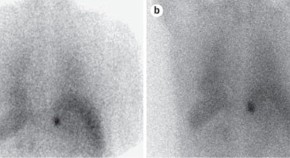
A patient with a large recurrent pheochromocytoma demonstrating the pitfalls of diagnosis
This Case Study illustrates some of the potential pitfalls of diagnosis and demonstrates a combination of problems of follow-up biochemical screening in a patient operated for a large pheochromocytoma at increased risk of malignant disease. The difficulty in assessing the presence of disease after initial surgical resection and reaching a diagnosis of malignancy are highlighted.
- Jörg Singer
- Christian A. Koch
- Ralf Paschke
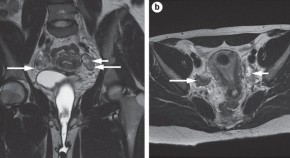
A premenopausal woman with virilization secondary to an ovarian Leydig cell tumor
Virilizing ovarian tumors are rare neoplasms that may affect both women of reproductive age and postmenopausal women. This Case Study describes a young woman with longstanding amenorrhea and virilization and highlights the challenges and pitfalls in the diagnosis and choice of proper treatment for this uncommon cause of female hyperandrogenism.
- André M. Faria
- Ricardo V. Perez
- Maria A. A. Pereira
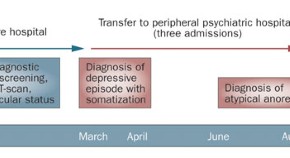
Addisonian crisis in a young man with atypical anorexia nervosa
Despite remarkable progress in the diagnosis and treatment of primary adrenal insufficiency, patients still suffer from delayed diagnosis, impaired well-being and the risk of life-threatening adrenal crisis. This Case Study highlights the need to evaluate individuals with chronic hyponatremia or unexplained weight loss and lack of energy for adrenal insufficiency.
- Bruno Allolio
- Katharina Lang
- Stefanie Hahner
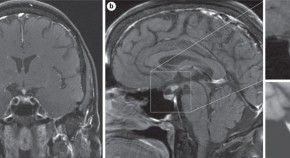
A patient with diabetes insipidus, anterior hypopituitarism and pituitary stalk thickening
Pituitary stalk thickening may occur as a result of diverse causes, including neoplastic, inflammatory and infectious diseases, and may lead to central diabetes insipidus, anterior hypopituitarism and local mass effect. This report discusses the case of a patient with pituitary stalk thickening associated with Langerhans cell histiocytosis, and highlights pertinent diagnostic and management issues.
- Nicholas A. Tritos
- Thomas N. Byrne
- Anne Klibanski
Klinefelter syndrome presenting as behavioral problems in a young adult
This Case Study describes an 18-year-old Somali man who initially presented to medical care with behavioral problems and was later diagnosed as having Klinefelter syndrome. Presented from the perspective of the primary care provider, this case illustrates the challenges in the clinical diagnosis and issues associated with long-term management of this relatively under-recognized condition.
- Alexandra M. Molnar
- Genji S. Terasaki
- John K. Amory
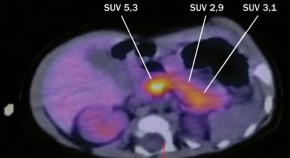
Focal congenital hyperinsulinism in a patient with septo-optic dysplasia
This Case Study describes an infant diagnosed as having focal congenital hyperinsulinism associated with septo-optic dysplasia, highlighting the importance of maintaining a high degree of suspicion in all infants who are investigated for chronic hypoglycemia. The authors report an as yet unidentified genetic etiology that may account for both focal congenital hyperinsulinism and septo-optic dysplasia.
- Raja Padidela
- Ritika R. Kapoor
- Khalid Hussain
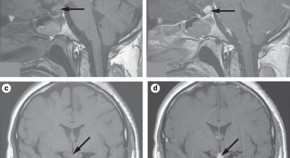
Lymphocytic hypophysitis with diabetes insipidus in a young man
Lymphocytic hypophysitis—an inflammatory condition of presumed autoimmune etiology—is characterized by an enlargement of the pituitary gland, resulting in its dysfunction. Although found generally in peripartum women, this Case Study of a 29-year-old man, who was referred to a neurosurgical clinic for evaluation of a suprasellar mass and diabetes insipidus, illustrates the need to consider this disorder in men.
- Ole-Petter R. Hamnvik
- Anna R. Laury
- Ursula B. Kaiser
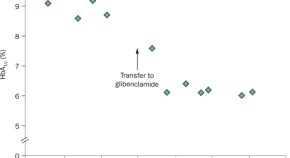
Reevaluation of a case of type 1 diabetes mellitus diagnosed before 6 months of age
The authors of this Case Study demonstrate the substantial impact of molecular genetic testing in the improvement of diagnostics and patient treatment on the basis of the case of a 17-year-old patient who was diagnosed as having type 1 diabetes mellitus in early infancy, but after reassessment was found to have neonatal diabetes mellitus owing to a Kir6.2 mutation.
- Angus G. Jones
- Andrew T. Hattersley
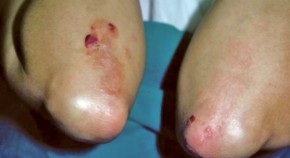
Treatment of postmenopausal osteoporosis in a patient with celiac disease
This Case Study describes a patient diagnosed as having celiac disease as a result of examinations for secondary causes of bone loss. As osteoporosis in patients with celiac disease might result from a reduction of nutrient absorption in the small bowel, leading to calcium and/or vitamin D deficiency, the investigators highlight the need to evaluate secondary causes of osteoporosis in patients with persistent decline in BMD, particularly in postmenopausal women after treatment with hormone replacement therapy.
- JoAnn V. Pinkerton
- Alan C. Dalkin
- Edward B. Stelow
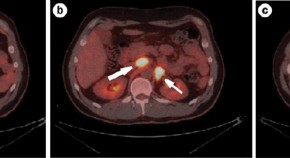
Paraganglioma syndrome type 1 in a patient with Carney–Stratakis syndrome
A thorough understanding of the diagnosis and treatment of familial paraganglioma syndromes is required for optimal therapy and management of patients with mutations of the succinate dehydrogenase complex. In this Case Study, Ayala-Ramirez and colleagues discuss current techniques for the localization of pheochromocytomas, paragangliomas and gastrointestinal stromal tumors and address the controversies of surgical removal of bilateral pheochromocytomas caused by a hereditary syndrome in a patient with Carney-Stratakis syndrome and paraganglioma syndrome type 1.
- Montserrat Ayala-Ramirez
- Glenda G. Callender
- Camilo Jimenez
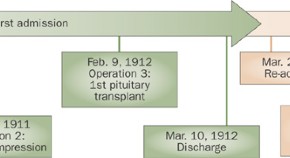
Harvey Cushing's attempt at the first human pituitary transplantation
Advances in organ and tissue transplantation continue to improve the care of patients with multiple diseases. The authors present the case of a patient with hypopituitarism secondary to a suprasellar mass, in whom the first documented pituitary gland transplantation was performed. This case study illustrates Harvey Cushing's pioneering work in pituitary transplantation in the early 20th century and the essential relationship between laboratory research and clinical practice.
- Courtney Pendleton
- Hasan A. Zaidi
- Alfredo Quiñones-Hinojosa
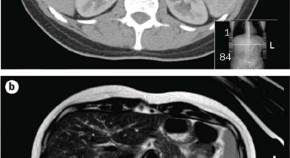
Diagnosis of insulinoma in a patient with hypoglycemia without obvious hyperinsulinemia
Initial diagnosis of insulinoma requires demonstration of inappropriately elevated insulin levels and concurrent hypoglycemia in the absence of administration of exogenous insulin or sulphonylureas. This article presents the case of a patient with insulinoma, who presented with hypoglycemia without coinciding evident hyperinsulinemia according to current guidelines. The article details current diagnostic criteria and highlights the role of clinical judgment in the investigation and management of cases, which do not conform to an expected pattern.
- Catarina Coelho
- Maralyn R. Druce
- Ashley B. Grossman
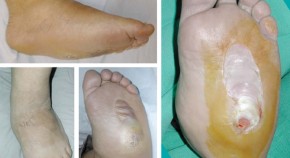
A case of diabetic Charcot arthropathy of the foot and ankle
Charcot arthropathy of the neuropathic foot and ankle is characterized by bone and joint destruction and deformities that may lead to ulcer, soft tissue infection, osteomyelitis and amputation. This article reviews the evaluation and treatment of this condition, highlighted by a clinical case of a man with type 2 diabetes mellitus who had Charcot collapse of the longitudinal arch, rocker bottom deformity and plantar ulcer.
- John M. Embil
- Elly Trepman
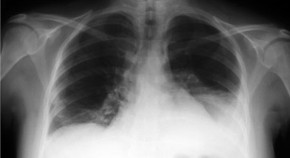
A woman with polycystic ovary syndrome treated for infertility by in vitro fertilization
This case illustrates some of the difficulties in treating anovulatory women with polycystic ovary syndrome, which is the most common cause of anovulatory infertility. Insulin resistance is a contributing factor to the pathogenesis of the syndrome. Assisted conception therapy is an effective treatment for women with polycystic ovary syndrome who are refractory to standard ovulation induction therapies or who have co-existing infertility factors. However, women with polycystic ovaries are particularly sensitive to stimulation with gonadotropins and have an increased risk of developing ovarian hyperstimulation syndrome.
- Thomas Tang
- Adam H. Balen
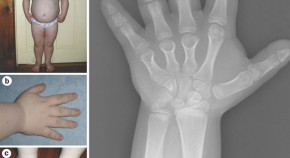
Pseudohypoparathyroidism type 1a and insulin resistance in a child
This article presents the case of a child with pseudohypoparathyroidism type 1a and associated endocrinopathies, namely, growth hormone deficiency, hypothyroidism, parathyroid hormone resistance and insulin resistance. The article details the natural history and management of these endocrinopathies, including the controversy over growth-hormone therapy, and potential mechanisms for insulin resistance in pseudohypoparathyroidism type 1a.
- Benjamin U. Nwosu
- Mary M. Lee
A case of severe, refractory diabetic gastroparesis managed by prolonged use of aprepitant
Gastroparesis is a complication of diabetes mellitus that is associated with prolonged periods of suboptimal glycemic control. This article describes a patient who had diabetic gastroparesis that was unresponsive to conventional treatments. Her severe vomiting was successfully controlled by use of the antiemetic drug aprepitant for 4 months before a gastric electrical stimulation device was fitted.
- Kiang Chong
- Ketan Dhatariya
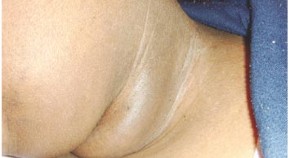
Evaluation of a child for secondary causes of obesity and comorbidities
Childhood obesity is a serious public health concern. This Case Study discusses the evaluation and treatment of a child with obesity. The article details how careful assessment can exclude genetic causes of obesity in most children and outlines how children without genetic causes of the condition can benefit from individualized lifestyle modification programs.
- Robert E. Kramer
- Stephen R. Daniels
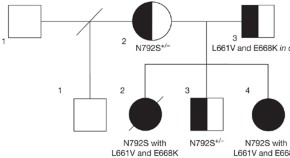
Generalized arterial calcification of infancy: treatment with bisphosphonates
Generalized arterial calcification of infancy is a rare and often fatal genetic disorder, for which no formalized treatment approach exists. This article describes a case where treatment with nitrogen-containing bisphosphonates resulted in normalization of the arterial structure.
- Kim A Ramjan
- Tony Roscioli
- Craig FJ Munns
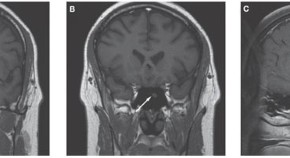
Cyclic Cushing syndrome due to an ectopic pituitary adenoma
Cyclic Cushing syndrome is a rare disorder characterized by periodic fluctuations in adrenal cortisol secretion, with phases of hypercortisolism alternating with periods of normal or low cortisol production. This Case Study discusses diagnostic challenges and treatment options in a patient with cyclic Cushing syndrome due to an ectopic pituitary adenoma.
- Rahfa K Zerikly
- Amir H Hamrahian

A patient with stress-related onset and exacerbations of Graves disease
Emotional stress might affect thyroid function by causing immunological perturbations and also via neural pathways. This article demonstrates a case in which both the onset of Graves disease and later exacerbations of hyperthyroidism were triggered by stressful events, and discusses management strategies for patients with stress-related Graves disease.
- Roberto Vita
- Daniela Lapa
- Salvatore Benvenga
Quick links
- Explore articles by subject
- Guide to authors
- Editorial policies
This website is intended for healthcare professionals

- { $refs.search.focus(); })" aria-controls="searchpanel" :aria-expanded="open" class="hidden lg:inline-flex justify-end text-gray-800 hover:text-primary py-2 px-4 lg:px-0 items-center text-base font-medium"> Search
Search menu
Al Halteet S, Abdel-Hadi A, Hassan M, Awad M. Prevalence and antifungal susceptibility profile of clinically relevant Candida Species in postmenopausal women with diabetes. Biomed Res Int. 2020; 2020 https://doi.org/10.1155/2020/7042490
Andrade M, Bayram-Weston Z, Knight J. Endocrine system 4: adrenal glands. Nursing Times. 2021; 117:(8)54-58
Arima H, Azuma Y, Morishita Y, Hagiwara D. Central diabetes insipidus. Nagoya J Med Sci. 2016; 78:(4)349-358 https://doi.org/10.18999/nagjms.78.4.349
Caron P, Brue T, Raverot G Signs and symptoms of acromegaly at diagnosis: the physician's and the patient's perspectives in the ACRO-POLIS study. Endocrine. 2019; 63:(1)120-129 https://doi.org/10.1007/s12020-018-1764-4
Escobar-Morreale HF. Polycystic ovary syndrome: definition, aetiology, diagnosis and treatment. Nat Rev Endocrinol. 2018; 14:(5)270-284 https://doi.org/10.1038/nrendo.2018.24
Fox T, Brooke A, Vaidya B. Eureka Endocrinology, 1st edn. London: JP Medical Ltd; 2015
Goff LM. Ethnicity and type 2 diabetes in the UK. Diabet Med. 2019; 36:(8)927-938 https://doi.org/10.1111/dme.13895
Khan S, Fitch S, Knox S, Arora R. Exocrine gland structure-function relationships. Development. 2022; 149:(1) https://doi.org/10.1242/dev.197657
Knight J. Endocrine system 1: overview of the endocrine system and hormones. Nursing Times. 2021; 117:(5)38-42
Knight J, Andrade M, Bayram-Weston Z. Endocrine system 3: thyroid and parathyroid glands. Nursing Times. 2021; 117:(7)46-50
Kumar and Clark's clinical medicine, 9th edn. In: Kumar PJ, Clark ML (eds). Elsevier: Edinburgh; 2017
Liu Y, Zhi X. Advances in genetic diagnosis of Kallmann syndrome and genetic interruption. Reproductive Sciences. 2021; https://doi.org/10.1007/s43032-021-00638-8
National Institute for Health and Care Excellence. Thyroid disease: assessment and management. NICE Guidance NG145. 2019. https://www.nice.org.uk/guidance/ng145 (accessed 9 March 2022)
National Institute for Health and Care Excellence. Type 2 diabetes in adults: management. NICE Guidance NG28. 2022. https://www.nice.org.uk/guidance/ng28 (accessed 14 March 2022)
Hypoparathyroidism: too little parathyroid hormone production. 2018. https://www.endocrineweb.com/conditions/hypoparathyroidism/hypoparathyroidism (accessed 9 March 2022)
Current diagnosis and management of Graves' disease. 2018. https://pubmed.ncbi.nlm.nih.gov/29950539
Tan DX, Xu B, Zhou X, Reiter RJ. Pineal calcification, melatonin production, aging associated health consequences and rejuvenation of the pineal gland. Molecules. 2018; 23:(2) https://doi.org/10.3390/molecules23020301
Taylor PN, Albrecht D, Scholz A Global epidemiology of hyperthyroidism and hypothyroidism. Nature Reviews Endocrinology. 2018; 14:(5)301-316 https://doi.org/10.1038/nrendo.2018.18
van den Beld A, Kaufman J, Zillikens M, Lamberts S, Egan J, van der Lely A. The physiology of endocrine systems with ageing. Lancet Diabetes Endocrinol. 2018; 6:(8)647-658 https://doi.org/10.1016/S2213-8587(18)30026-3
Walter MH, Abele H, Plappert CF. The role of oxytocin and the effect of stress during childbirth: neurobiological basics and implications for mother and child. Front Endocrinol (Lausanne). 2021; 12 https://doi.org/10.3389/fendo.2021.742236
Wémeau J, Klein M, Sadoul J, Briet C, Vélayoudom-Céphise F. Graves' disease: Introduction, epidemiology, endogenous and environmental pathogenic factors. Ann Endocrinol (Paris). 2018; 79:(6)599-607 https://doi.org/10.1016/j.ando.2018.09.002
World Health Organization. Use of glycated haemoglobin (HbA1c) in the diagnosis of diabetes mellitus. Abbreviated report of a WHO consultation. 2011. https://apps.who.int/iris/handle/10665/70523 (accessed 9 March 2022)
World Health Organization. Endocrine disrupters and child health: Possible developmental early effects of endocrine disrupters on child health. 2012. https://www.who.int/publications/i/item/9789241503761 (accessed 9 March 2022)
The endocrine system and associated disorders
Emily Ashwell
Community Caseload Manager Nurse, Buckinghamshire Healthcare NHS Trust
View articles
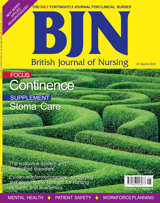
The endocrine system and the hormones it produces control a range of processes in the body, as well as helping to maintain homeostasis. When this complex system is disrupted, including by changes associated with ageing, disease may result. This article provides an overview of the endocrine systems, key glands and hormones, and some of the problems that can arise from disruption to the system. A case study is provided to illustrate one possible presentation of endocrine disruption, in the form of diabetes-associated complications.
The endocrine system comprises several distinct glands and tissues, which are made up of specialised cells that synthesise, store, and secrete hormones. Hormones are chemical messengers that can act on nearby cells via interstitial fluid (paracrine effect), on the cell of origin (autocrine effect), at a distant site (endocrine or exocrine effects), or as neurotransmitters ( Knight, 2021 ). Neurotransmitters across synapses contribute to the rapid actions of the nervous system. In contrast, endocrine effects tend to be slow to develop and result in prolonged responses potentially lasting weeks, as hormones travel in the bloodstream from an endocrine gland to another organ. Hormones control a wide range of physiological processes, including growth, metabolism, sleep, immune system response, ‘fight or flight’, reproduction, mood, and behaviour ( Kumar and Clark, 2017 ). They also assist in maintaining homeostasis (a state of physiological equilibrium) by regulating the body's internal environment in response to changes in the external environment. The human body produces more than 100 hormones to carry out these processes, and research is continuing to further our understanding of their functions and interactions as well as identifying more hormones ( Knight, 2021 ).
Endocrine and exocrine glands
All glandular tissues produce secretions. Exocrine glands are arranged so they secrete theirs via a central duct, which directs the secretions (hormones) to the desired location, for example sweat from glands in the skin ( Khan et al, 2022 ). In contrast, endocrine glands release their secretions into the bloodstream, as part of their primary function. Therefore, endocrine glands have a rich blood supply to ensure efficient transport of their hormones around the body and enable them to continuously monitor blood for changes that initiate hormone secretion ( Fox et al, 2015 ) ( Figure 1 ).
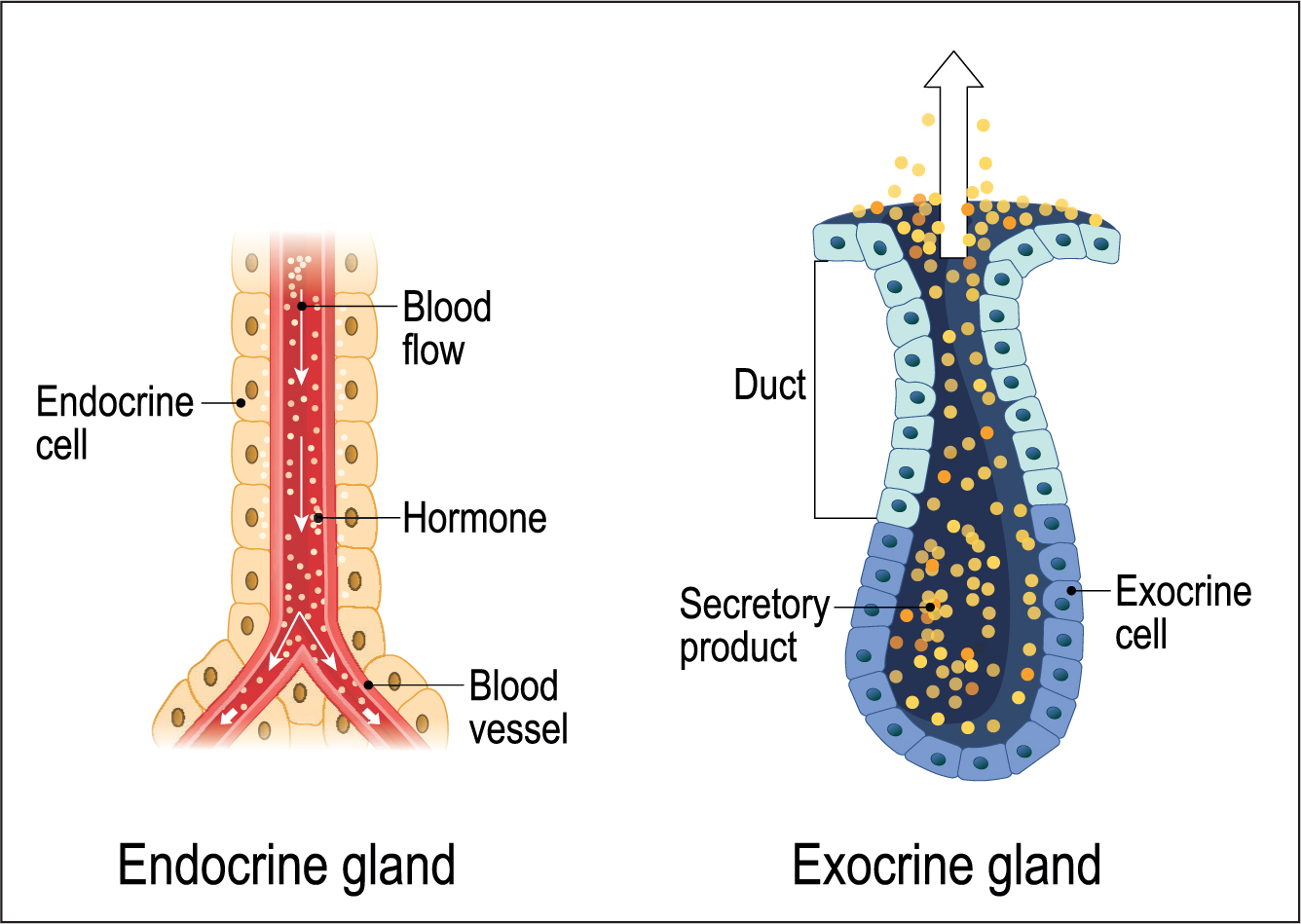
The hypothalamus is a part of the brain that releases several hormones, which affects other endocrine glands' hormone production, acting as the endocrine control centre and linking the nervous system with the endocrine system ( Fox et al, 2015 ). This is connected to the pituitary gland, which produces hormones controlling growth, metabolism, and sexual development. The pineal gland is also located in the brain and produces melatonin, which affects wakefulness ( Tan et al, 2018 ).
Outside of the brain there is the thyroid gland, which sets the body's metabolic rate, the parathyroid glands, which control the absorption and excretion of calcium and phosphate, and the thymus gland, which releases thymosin, stimulating the production of immune T cells ( Fox et al, 2015 ). The adrenal glands, located on top of each kidney, control blood pressure, fluid and electrolyte balance, and the body's response to physiological and psychological stress ( Andrade et al, 2021 ). The endocrine glands of the pancreas secrete insulin and glucagon, which together regulate blood glucose concentration. Reproductive glands (testes in males and ovaries in females) release sex hormones that enable reproduction and sexual maturation ( Figure 2 ). In addition, the intestine and adipose tissue also secrete hormones as part of their primary function, although these are not major endocrine glands. Other organs, such as the liver, kidney, heart, and skin all have secondary endocrine functions ( Fox et al, 2015 ).
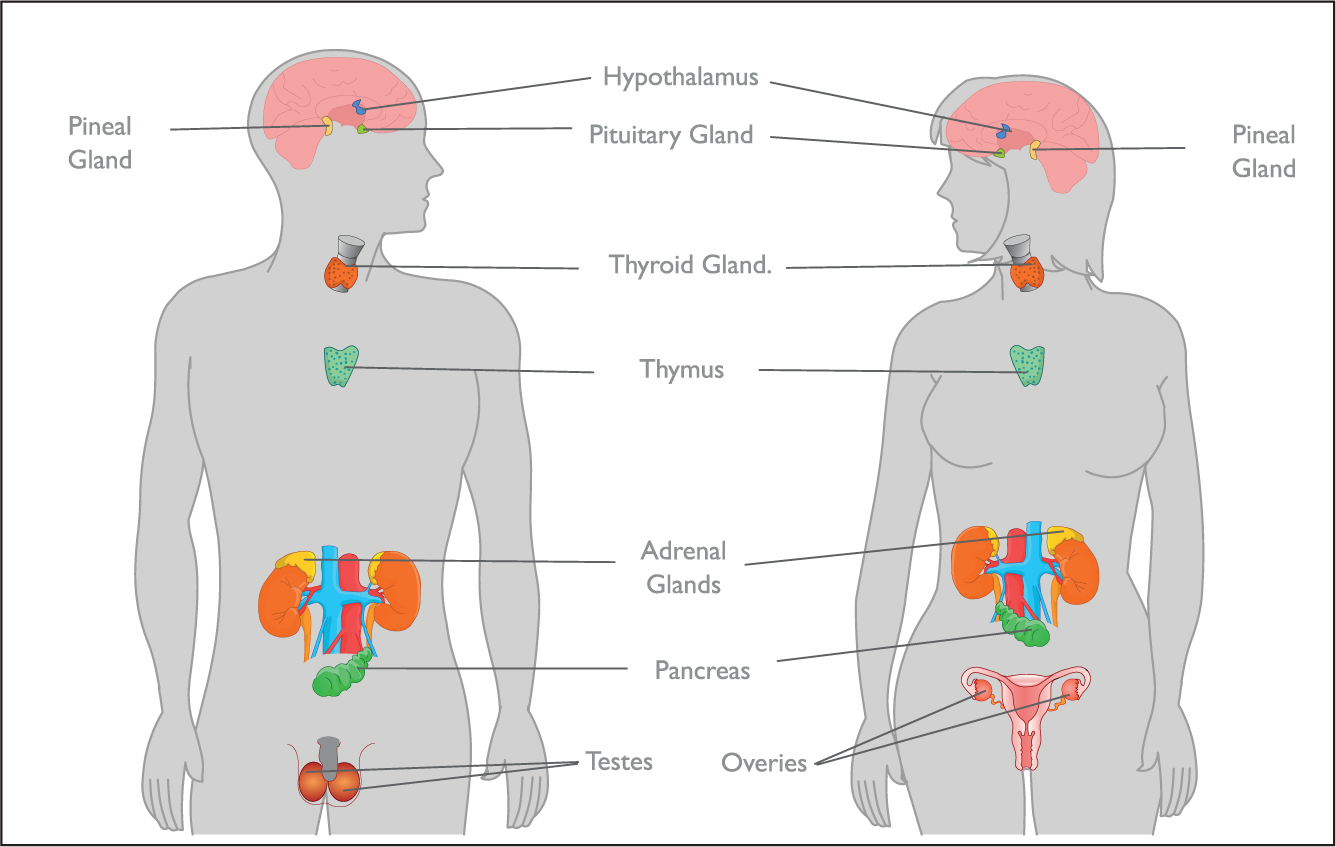
Hormone signalling pathways
Hormones are grouped into three chemical classes: peptides, amines, and lipids (mainly steroids) and are synthesised by endocrine glands cells before being stored in preparation for rapid secretion as required ( Fox et al, 2015 ). On release they are transported through the body in the blood, where they then employ their desired physiological effects by binding to specific receptors on the outer membrane or within their target cells. Intracellular binding directly affects the cell's gene expression, whereas extracellular binding changes the cell's metabolism through cascade reactions. Many medications have been created to target these receptor sites by imitating a hormone's action (for example, people with hypothyroidism can be given levothyroxine to mimic the thyroxine they are lacking), or by acting as a competitive antagonist, blocking target receptors to prevent the hormone from binding and employing its effect (for example, beta blockers can be used to treat the adrenaline-related symptoms of hyperthyroidism) ( Knight, 2021 ). Once used, hormones are then released from the target cells either unchanged or inactivated and transported to the liver or kidneys to be broken down and excreted as bile or urine, respectively.
Hormone production is controlled with feedback loops. Most often these involve negative feedback mechanisms, where the effects of a hormone inhibit its release to maintain homeostasis, such as the mechanisms involved in blood glucose regulation ( Figure 3 ). Hypoglycaemia and hyperglycaemia in diabetes mellitus demonstrate deviation from a normal range (in this case blood sugar), which can can be symptomatic and contribute to more severe pathology. In positive feedback mechanisms a hormone's effects stimulate its secretion, for example, in childbirth oxytocin is released, stimulating uterine contractions and pushing the baby towards the cervix, which stimulates the release of more oxytocin ( Walter et al, 2021 ).
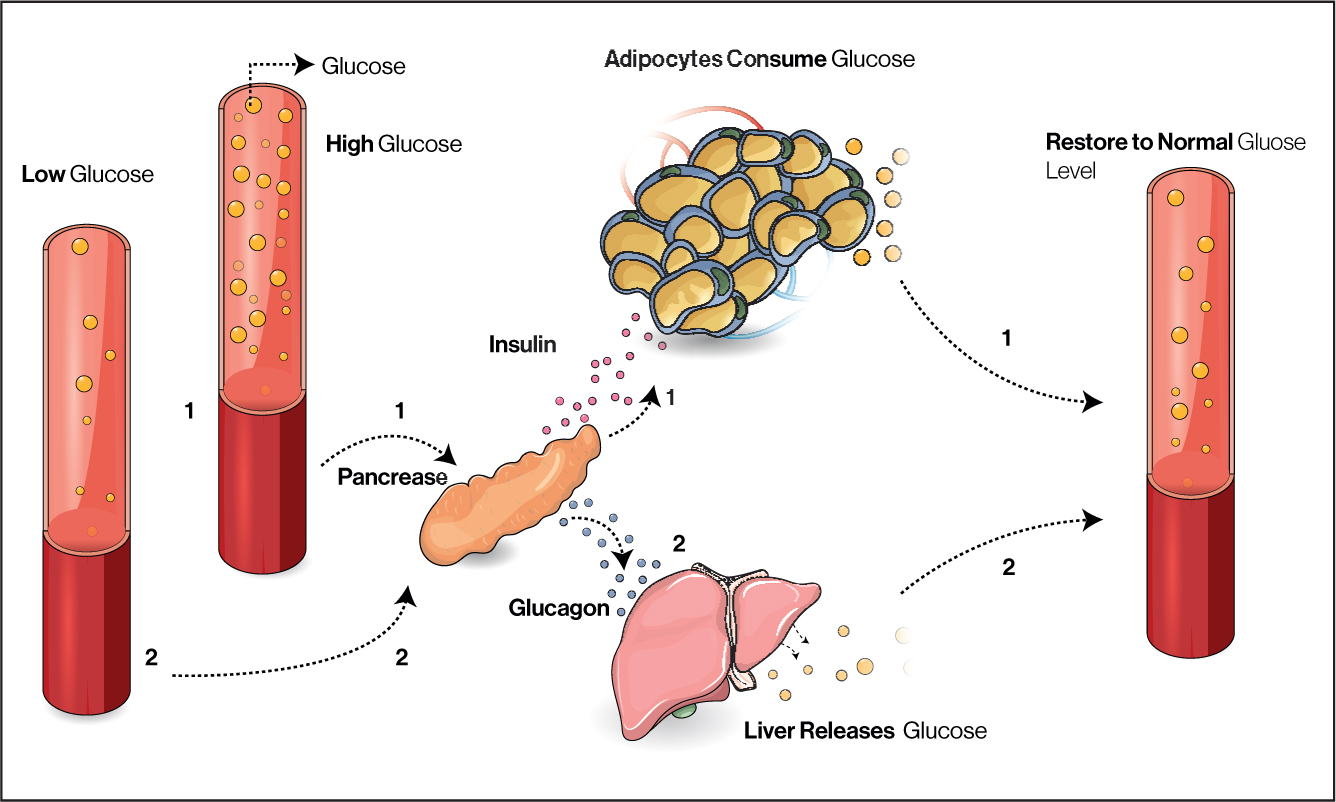
Aetiology of endocrine disorders
Disturbance at any point in these complex processes or development of these glands can result in disease. Endocrine disorders largely result from too much or too little hormone secretion. This hormonal imbalance may be due to a problem with the endocrine feedback system, genetic disorder, infection, injury or disease of the endocrine gland, or the growth of nodules or tumours in the glands ( Kumar and Clark, 2017 ). For example, in Cushing's disease the negative feedback loop is disturbed so pituitary hormone ACTH production may become excessive as it is not inhibited by excessive cortisol, resulting in symptoms such as central obesity and high blood pressure. Ageing also lessens the endocrine system's functioning, as the secretion of several hormones is reduced, along with target cells sensitivity to the hormones produced. Examples include falling oestrogen levels triggering menopause, decreasing growth hormone causing loss of muscle mass, declining melatonin levels disturbing sleep, and insulin sensitivity reducing, which increases the risk of diabetes—although these changes fluctuate significantly between individuals ( van den Beld et al, 2018 ). Children are also at risk of endocrine disorders, most commonly thyroidal dysfunctions, diabetes, cryptorchidism, precocious puberty, and pancreatic and thyroid cancers ( World Health Organization (WHO), 2012 ).
Diagnosis of endocrine disorders is based on signs and symptoms, physical examination, medical history, imaging tests to detect tumours, and blood and urine analysis to determine the levels of hormone within them. Once diagnosed treatment can be targeted to the specific disorder and individual, managing their symptoms and maintaining homeostasis with medications, surgery, chemotherapy, or radiation therapy as required ( Knight, 2021 ).
Endocrine disorders
Although not exhaustive, Table 1 gives some examples of hormones and disorders for key glands. Table 2 gives an elaboration of the cause and signs and symptoms for a disorder for each gland.
Hypothyroidism
Thyroid diseases are among the most common of the endocrine disorders and can affect people of all ages. The most common of these disorders is hypothyroidism, where the thyroid gland is underactive, resulting in a deficiency of T3 and T4 in the bloodstream ( Knight et al, 2021 ). Hypothyroidism caused by diseases of the thyroid gland, such as infection, inflammation, or deficiency, is known as primary hypothyroidism and is more likely to affect women. When hypothyroidism results from pituitary or hypothalamic disorders, including benign or malignant growths or following head trauma, it is known as secondary hypothyroidism ( Taylor et al, 2018 ). Autoimmune thyroiditis is the most common cause of primary hypothyroidism in high-income countries, but iodine deficiency remains a major cause in many parts of the world ( Knight et al, 2021 ). Iodine is also vital during pregnancy as thyroid hormones are essential for neurological development and the foetus relies entirely on maternal thyroid hormones until about 14 weeks' gestation when it begins to produce its own ( Taylor et al, 2018 ). Autoimmune thyroiditis with inflammation of the thyroid (goitre) is called Hashimoto's thyroiditis and occurs when the follicular components of the thyroid gland are progressively destroyed by the patient's own immune system, resulting in reduced secretion of T3 and T4, and a reduced metabolic rate. Most individuals with mild hypothyroidism have non-specific symptoms including tiredness, lethargy, weight gain and depression, all of which are common in the general population. Therefore, diagnosis is confirmed with biochemical tests ( Taylor et al, 2018 ).
Once diagnosed treatment for hypothyroidism usually involves taking the drug levothyroxine, a synthetic form of T4. The dose of levothyroxine is calculated based on body weight, except in the case of people with ischaemic heart disease who are given a lower dose as it can precipitate severe angina ( Kumar and Clark, 2017 ).
Hyperthyroidism
Hyperthyroidism is caused when an overactive thyroid gland excretes excessive amounts of hormones. This affects around 2% of women and 0.2% of men, with the incidence increasing with age in both sexes ( National Institute for Health and Care Excellence (NICE), 2019 ). Graves' disease is the most common form of hyperthyroidism. It is an autoimmune disorder, characterised by the signs and symptoms shown in Table 2 , where antibodies are produced that bind to the same receptors as TSH and subsequently increase metabolic rate, raising the body's core temperature, which leads to increased sweating and weight loss ( Knight et al, 2021 ). Graves' disease can also cause a build-up of inflamed, fibrous, fatty tissue behind the eyes, causing them to bulge.
Risk factors for Graves' disease include smoking and being female ( Wémeau et al, 2021 ). Hyperthyroidism can be treated using anti-thyroid drugs or radioactive iodine (radioiodine) therapy that works by damaging and killing some of the follicular cells that secrete hormones, although this is not suitable for pregnant or breastfeeding women ( Subekti and Pramono, 2018 )
Presentation
Ms Singh is 56 years old and attends her GP after a week of severe itching (pruritus) and noticing thick white vaginal discharge.
Initial interpretation
Sexually transmitted diseases should be considered as a potential cause of vaginal discharge. However, in a woman over 50 years old, thrush (Candida albicans) is the most common cause ( Al Halteet et al, 2020 ).
Ms Singh had two previous episodes of thrush in the past few months, which she self-medicated with over-the-counter antifungal pessaries from the pharmacy. These temporarily improved her symptoms, which then reoccurred a few weeks later. She is finding the itching bothersome and was wondering if anything else can be prescribed to clear up the infection for good.
Her husband has no symptoms, and she has had no new sexual contacts in the last 30 years. In the past year she has been feeling increasingly tired and has put on 12 kg. Her older brother was diagnosed with diabetes mellitus and recently died following a stroke aged 64 years and her mother has several lower leg ulcers.
Physical examination
Ms Singh is obese with a body mass index (BMI) of 36.4 kg/m 2 . Her blood pressure is raised at 148/94 mmHg. A sample of her vaginal discharge, which is thick, white, and cottage-cheese like, has been sent for analysis.
Further investigations
Urinalysis identifies the presence of glucose in her urine (glycosuria). A random venous blood glucose reading of 12.8 mmol/litre is above normal range, and later her blood test results show her haemoglobin A1c (HbA1c), a marker of long-term glucose levels, is also high at 68 mmol/mmol. Table 3 shows the WHO reference levels for these tests in diabetes diagnosis.
Source: WHO, 2011
Interpretation of findings
Ms Singh has a strong family history of diabetes mellitus. Her obesity and ethnicity are also predisposing factors for type 2 diabetes mellitus ( Goff, 2019 ). These factors alongside her test results lead to Ms Singh being diagnosed with type 2 diabetes. Her high glucose levels in the urine and blood allows yeasts to flourish and accounts for her recurrent episodes of thrush.
Initially Ms Singh is given diet and lifestyle education to manage her diabetes, this will be reviewed in a few months to see how effective it has been. Her risk of further episodes of thrush will reduce as she improves her glucose control but, in this instance, she will be prescribed another antifungal pessary.
If her type 2 diabetes worsens or is unsuccessfully managed by diet and lifestyle adjustments, she may then be prescribed medications such as metformin and eventually even insulin ( NICE, 2022 ).
- Endocrine glands produce hormones, which maintain homeostasis with feedback loops and control bodily processes
- Hormones travel via the bloodstream and bind with specific receptors to produce their desired effect on target cells
- Endocrine disorders largely result from too much or too little hormone secretion due to disruption in the gland or at any point in the complex feedback pathways
- Medications can be used to mimic hormones or block receptors to attempt to reverse the effects of endocrine disorders

Advanced Practice in Endocrinology Nursing
- © 2019
- Sofia Llahana 0 ,
- Cecilia Follin 1 ,
- Christine Yedinak 2 ,
- Ashley Grossman 3
School of Health Sciences, City, University of London, London, UK
You can also search for this editor in PubMed Google Scholar
Department of Oncology, Skåne University Hospital, Lund, Sweden
Northwest pituitary center oregon health and sciences university, portland, usa, churchill hospital, university of oxford, oxford, uk.
Endorsed by the European Society of Endocrinology (ESE)
Also supported by the Federation of International Nurses in Endocrinology (FINE), Endocrine Nurses Society (ENS), Endocrine Nurses’ Society of Australasia (ENSA), Pediatric Endocrinology Nursing Society (PENS)
The first ever published book in Endocrinology Nursing which includes 13 sections and 69 chapters covering Paediatric and Adult topics
An all-in-one comprehensive resource for clinical practice and professional development supporting nurses to progress from novice to expert level
Covers endocrine-related topics within specialties such as reproduction, osteoporosis, oncology, male & female health, obesity, metabolic disorders
159k Accesses
62 Citations
58 Altmetric
This is a preview of subscription content, log in via an institution to check access.
Access this book
- Available as EPUB and PDF
- Read on any device
- Instant download
- Own it forever
- Durable hardcover edition
- Dispatched in 3 to 5 business days
- Free shipping worldwide - see info
Tax calculation will be finalised at checkout
Other ways to access
Licence this eBook for your library
Institutional subscriptions
Table of contents (70 chapters)
Front matter, growth and development, the importance of auxology for growth assessment.
- Terri H. Lipman, Megan K. Lessig
Short Stature, Growth Hormone Deficiency, and Primary IGF-1 Deficiency
- Bin Moore, Amanda Whitehead, Kate Davies

Disorders of Sex Development (DSD)
- Kate Davies
Puberty: Normal, Delayed, and Precocious
- Eileen Pyra, Wendy Schwarz
Treatment Issues in the Care of Pediatric Patients with Endocrine Conditions
- Peggy Kalancha, Nicole Kirouac, Eileen Pyra
Transition from Paediatric to Adult Services
- Susie Aldiss
Endocrine Disorders and Genetics in Childhood
Genetics and family history.
- Kelly Mullholand Behm
Congenital Hyperinsulinism (CHI)
- Claire Gilbert, Kate Morgan, Louise Doodson, Khalid Hussain
Genetic Syndromes Presenting in Childhood Affecting Hypothalamic Function
- Kathryn Clark
Genetic Syndromes Presenting in Childhood Affecting Gonadotropin Function
- Sharron Close, Ana Claudia Latronico, Marina Cunha-Silva
McCune–Albright Syndrome
- Beth Brillante, Lori Guthrie
Hypothalamus and Pituitary
Anatomy and physiology of the hypothalamic-piuitary axis.
- Kathryn Evans Kreider
Metabolic Effects of Hypothalamic Dysfunction
Cecilia Follin
Sella and Suprasellar Brain Tumours and Infiltrarive Disorders Affecting the HPA-Axis
Christine Yedinak
Dynamic Investigations and Diagnostic Testing
- Christine Yedinak, Kate Davies
Diagnostic Imaging
- Adult and paediatric
- Advanced nursing practice
- Clinical endocrinology
- Endocrinology nursing
- Reproduction
- metabolic disease
About this book
This book provides a comprehensive guide for nurses practicing in any area of endocrinology and at any level of expertise. Endocrinology Nursing is a fast-developing specialty with nurses performing advanced roles and expanding their practice to run independent nurse-led services. Supported by the European Society of Endocrinology (ESE) and edited by members of the ESE Nurses Working Group, this is the first book ever published specifically for endocrine nurses. It is also an excellent resource for endocrinology specialty trainees, general practitioners, medical and nursing students, expert patients and nurses working in specialties such as fertility, osteoporosis, oncology, obesity, urology and gynaecology, who look after patients with endocrine-related disorders.
This volume includes 13 sections and 69 chapters providing a comprehensive overview of adult and paediatric endocrinology but also a section on advanced practice, role development and nursing research. It has been written by an international team of more than 100 eminent nurses, physicians, surgeons, psychologists and other healthcare professionals, which makes this book a valuable resource for any multidisciplinary team. Many patient advocacy groups have contributed with case studies which emphasises the close working relationships with patients.
“This is the first textbook written for nurses in endocrinology. … The aim of the textbook is to support nurses in their clinical and professional development to progress from novice to expert level and advanced nursing practice, as well as a useful resource for endocrinologists/fellows, general practitioners, and other health care providers with an interest in Endocrinology.” (PENS Reporter, Vol. 31, 2019)
“Its 13 sections and 69 chapters are a comprehensive evidencebased clinical reference for paediatric and adult nurses in endocrinology, but are also useful for specialty trainees, general practitioners, students and expert patients. … This vital resource should support our colleagues to ensure the best possible patient care and to raise the profile of endocrine nursing around the globe.” (ESE News, Issue 39, 2019)
Editors and Affiliations
Sofia Llahana
Ashley Grossman
About the editors
Dr. Sofia Llahana , DNSc, MSc, BSc(Hons), RN, INP, is a Senior Lecturer, Education and Research, in Advanced Clinical Practice at City, University of London. She was the first Consultant Nurse in Endocrinology in the United Kingdom and worked at University College Hospital in London where she continues to maintain an honorary position. She has a special clinical and research interest in pituitary and adrenal conditions, reproductive endocrinology, men’s health, self-management, adherence to medication and behavioural medicine. Her current research portfolio includes ongoing and new investigator-led and collaborative national and European studies in adrenal insufficiency, testosterone replacement therapy, male reproduction, pituitary conditions, growth hormone deficiency, and type 2 diabetes. She is the Chair of the Nurses Committee and a member of the Executive Committee of the European Society of Endocrinology (ESE), a Board member of the Federation of International Nurses in Endocrinology (FINE), and the only nurse member in the Scientific Committee for the International Congress in Men’s Health. She also holds affiliations with several national and international Patient Advocacy Groups in Endocrinology.
Dr.Cecilia Follin graduated as a registered nurse from Institution of Health care science at the Medical faculty of Lund University in Sweden. She has over 15 years of experience from the field of Endocrinology. She holds particular interest in late complications after childhood cancer and pituitary and hypothalamic disorders. Cecilia is initiator and chair of the Nordic network of endocrine nurses.
Dr. Christine G. Yedinak (DNP, FNP-BC, MN, RN) is a board certified Family Nurse Practitioner and a Doctor of Nursing Practice who has provided clinical diagnosis and management of patients with pituitary and adrenal dysfunction for the last 14 years. She completed her post graduate and Doctoral Studies at Oregon Health & Sciences University, Portland Oregon. Dr. Yedinak also holds a post Graduate Diploma in Tertiary Education in Nursing from University of Southern Queensland, Toowoomba, Australia and provides clinical mentorship for doctoral and advanced practice nursing students, endocrine and neurosurgical residents and fellows. Her Doctoral project involved the development and pilot of an instrument for the measurement of Quality of Life in patients with pituitary tumors and diseases. Her ongoing clinical research is focused on clinical outcome studies and issues in the management of patients with acute and chronic pituitary diseases. Dr. Yedinak is involved in ongoing international collaborative studies in pituitary diseases. She authored 28 peer-reviewed articles, 43 abstracts and 6 book chapters and has presented her research at numerous scientific meetings worldwide. Dr. Yedinak is the President-elect of the US Endocrine Nurses Association, is co- founder of the Federation of International Nurses in Endocrinology (F.I.N.E) and a member of the European Society of Endocrinology Nurses’ Working Group.
Prof. Ashley Grossmann is Professor of Endocrinology and Consultant Physician at Oxford Centre for Diabetes, Endocrinology &; Metabolism, in Green Templeton College,Oxford, UK. His original interest lay on uncovering the control and regulatory mechanisms for the hypthalamus and pituitary. He is immediate Past-President of the European Neuroendocrine Association (ENEA), Chairman of the UKI Neuroendocrine Tumour Society (UKINETS), Chairman of the European Neuroendocrine Society (ENETS) Advisory Board, a Member of Council of the European Society for Clinical Investigation, and President elect for the European Society of Endocrinology.
Bibliographic Information
Book Title : Advanced Practice in Endocrinology Nursing
Editors : Sofia Llahana, Cecilia Follin, Christine Yedinak, Ashley Grossman
DOI : https://doi.org/10.1007/978-3-319-99817-6
Publisher : Springer Cham
eBook Packages : Medicine , Medicine (R0)
Copyright Information : Springer Nature Switzerland AG 2019
Hardcover ISBN : 978-3-319-99815-2 Published: 05 March 2019
eBook ISBN : 978-3-319-99817-6 Published: 26 February 2019
Edition Number : 1
Number of Pages : XXXIII, 1337
Number of Illustrations : 63 b/w illustrations, 209 illustrations in colour
Topics : Nursing , Endocrinology , Pediatrics , Metabolic Diseases , Reproductive Medicine , Oncology
- Publish with us
Policies and ethics
- Find a journal
- Track your research

Navigating the Endocrine System: A Comprehensive Insight for Nursing Students
In the intricate web of human physiology, the endocrine system stands as a vital orchestrator, regulating bodily functions through a network of glands and hormones. For nursing students, comprehending the complexities of this system is paramount. Let’s unravel the mysteries of the endocrine system, including its pharmacology, and explore its indispensable role in maintaining health.
Understanding the Endocrine System
The endocrine system is a meticulously organized network of glands, each producing specific hormones that act as messengers, regulating bodily processes. Unlike the rapid transmission of the nervous system, hormones travel through the bloodstream, reaching target cells across the body to maintain equilibrium.
Crucial Players: Glands and Hormones
Distinct glands, such as the pituitary, thyroid, adrenal, and pancreas, produce hormones that serve unique functions. Thyroxine from the thyroid gland controls metabolism, while cortisol from the adrenal glands manages stress response. Familiarizing oneself with these hormone-gland relationships is pivotal for nursing students, especially in understanding and treating endocrine-related ailments.
Pharmacology in the Endocrine System
Pharmacology plays a significant role in managing endocrine disorders. Nursing students must grasp medication classes like insulin for diabetes or levothyroxine for hypothyroidism. Understanding dosage, administration routes, and potential side effects empowers nurses to ensure safe medication management and educate patients on proper usage.
Regulation and Feedback Mechanisms
Maintaining hormone balance is critical for optimal bodily function. Feedback mechanisms, including negative and positive loops, regulate hormone production. Negative feedback loops, where rising hormone levels inhibit further secretion, maintain stability. Positive feedback loops, less common but equally significant, amplify the body’s response to certain stimuli.
Clinical Relevance in Nursing Practice
Nursing students must master comprehensive assessments to identify symptoms of endocrine disorders accurately. In conditions like diabetes, a holistic approach encompassing medication, diet, and lifestyle modifications is essential for effective management.
Common Endocrine Disorders and Pharmacological Interventions
Exploring prevalent endocrine disorders equips nursing students to recognize symptoms, understand diagnostic procedures, and implement appropriate pharmacological interventions. Managing conditions like diabetes involves educating patients on medication adherence, dietary adjustments, and monitoring for complications.
Interconnectedness with Other Body Systems
The endocrine system intricately intertwines with other bodily systems, influencing metabolism, growth, reproduction, and mood regulation. Nurses must grasp these interconnections to provide holistic care and understand how medications affect multiple systems.
Nursing Care and Pharmacological Support
Nurses serve as patient advocates, ensuring proper medication adherence and educating patients on managing endocrine disorders. They collaborate with interdisciplinary teams, contributing valuable insights into medication effects and patient responses to ensure comprehensive care.
Endocrine drugs encompass a diverse array of medications used to manage various endocrine disorders by either supplementing or inhibiting hormone production, regulating hormonal imbalances, or targeting specific receptors. These drugs play a pivotal role in clinical practice, aiding in the treatment of conditions such as diabetes, thyroid disorders, adrenal insufficiency, and more.
In the realm of diabetes management, insulin remains a cornerstone medication. Available in different forms such as rapid-acting, short-acting, intermediate-acting, and long-acting, insulin helps regulate blood sugar levels by facilitating glucose uptake into cells. Moreover, oral medications like metformin, sulfonylureas, and DPP-4 inhibitors complement insulin therapy in type 2 diabetes management. These drugs work through various mechanisms, including increasing insulin sensitivity, stimulating insulin secretion, or slowing down glucose production in the liver.
For thyroid disorders, medications such as levothyroxine serve as synthetic thyroid hormone replacements, primarily used in hypothyroidism. Levothyroxine helps restore adequate hormone levels, alleviating symptoms like fatigue, weight gain, and cold sensitivity. Conversely, medications like methimazole and propylthiouracil are employed in hyperthyroidism by inhibiting the production of thyroid hormones, aiding in managing symptoms associated with an overactive thyroid.
In the treatment of adrenal insufficiency, glucocorticoids such as hydrocortisone, prednisone, or dexamethasone serve as vital medications. They mimic the action of cortisol, compensating for adrenal hormone deficiencies and managing symptoms like fatigue, weakness, and low blood pressure.
Moreover, medications targeting the endocrine system include hormone receptor antagonists or agonists used in conditions like hormone-dependent cancers. For instance, selective estrogen receptor modulators (SERMs) like tamoxifen or aromatase inhibitors are employed in breast cancer treatment by either blocking estrogen receptors or inhibiting estrogen synthesis, thereby impeding cancer cell growth.
Clinical use of endocrine drugs demands meticulous patient education, dosage adjustments, and monitoring for potential side effects or drug interactions. Nurses play a crucial role in medication administration, educating patients on proper usage, monitoring therapeutic responses, and recognizing adverse reactions. Interdisciplinary collaboration among healthcare professionals ensures comprehensive patient care, tailoring treatments to individual needs and optimizing outcomes.
Understanding the mechanisms of action, indications, contraindications, and potential side effects of endocrine drugs is imperative for nursing students and healthcare professionals. A comprehensive grasp of these medications empowers them to provide safe and effective care, contributing significantly to the management of various endocrine disorders and improving patient outcomes.
The endocrine system’s complexity underscores its significance in maintaining bodily balance. For nursing students, understanding its pharmacology alongside its intricate workings equips them to navigate and care for patients with endocrine disorders. Proficient knowledge in endocrine pharmacology enables nurses to provide comprehensive, patient-centered care, facilitating better health outcomes for diverse patient populations.
Leave a Comment Cancel Reply
Your email address will not be published. Required fields are marked *
Save my name, email, and website in this browser for the next time I comment.

A girl aged 15 is referred to an Endocrine Clinic for short stature and delayed puberty
- February 24, 2019
- Pituitary disorders
- By Wendy Schwarz
Case history
A girl aged 15 years and 2 months is referred to the Endocrine Clinic for short stature and delayed puberty.
Read the patient information below and answer Question 1 .
Early history
- Born in Malaysia
- Full term, unknown birth weight, reported as “average”
- Diagnosed with asthma at age 2 months
- Immigrated to Canada at age 2 years
Health and medication history
- Previous health issues: recurrent right ear infections
- No known allergies
- Immunizations are up to date
- No history of head trauma
- No regular medications, but occasional salbutamol for cold-induced asthma
- Operations: right ear cholesteatoma requiring tympanomastoidectomy
- Computed tomography after surgery to look at the mastoid bone found possible Chiari malformation, but no follow-up MRI to confirm
School history
- Average grades, but feels she has to work harder than peers
- Has a few friends, reports bullying from other students about her height
- Extracurricular activities: dance
Family history
- Mom 150.9 cm, delayed menarche at age 14–15 years
- Dad 168.5 cm, average age for puberty history
- Mid-parental height centile: just below 10th
- Two older sisters, age 18 and 20 years, both had menarche at age 12 year
Question 1.
What would your differential diagnoses be?
- Constitutional delay of growth and puberty
- Turner syndrome
- Chronic condition, with malnutrition i.e. Celiac disease
- Hypopituitarism
The role of the nurse
The nurse is pivotal in providing quality healthcare for adolescent patients while communicating in an appropriate intellectual level. They must also appreciate the adolescent’s vulnerability and inexperience with the healthcare structure, their need for respect, privacy and confidentiality, and their developing need for independence.
Vulnerability
A medical diagnosis may make the adolescent feel vulnerable. Nurses should make the patient and family aware of any services that may be available for them. These services may include: support groups, measures to help them attend appointments, and access to treatments.
The attitude of the healthcare staff should be respectful, supportive, and honest. Adolescents are particularly sensitive to the behaviour of others.
During adolescent development, privacy is a very important aspect of their interactions with the healthcare system. A routine examination may be a source of embarrassment and may be very stressful for the adolescent. Offer privacy for undressing (such as behind a curtain, or alone in the examination room) and a gown to cover themselves.
Communication
The nurse should speak to the adolescent with respect, as well as clarity and honesty. They should make sure that the discussion is age appropriate, and give the adolescent the opportunity to ask questions. The nurse should also offer adolescents the opportunity to be involved in the decision-making about investigations and their treatment options.
Testing/diagnosis
Question 2..
Which laboratory tests do you think are needed to refine the diagnosis?
- Complete blood count, C-reactive protein
- Puberty hormones; LH, FSH, Estradiol
- Androgen panel; cortisol, androstendione, 17OH-P (hydroxiprogesterone), DHEA-S (dehydroepiandrosterone)
- Electrolytes, creatinine, TSH and FT4 (Free T4)
- Chromosone analysis (Karyotype)
Question 3.
What other tests would you carry out?
- Laboratory tests
- Genetic testing
- Pelvic ultrasound
- MRI of pituitary
On examination of the patient
- Height 132.5 cm (<1% for age, –4.35 SD )
- Weight 29.5 kg (<1%,–-3 SD)
- BMI 16.9 m 2 (7%)
- Puberty Tanner stage: Axillary hair 1, Breast 1, Pubic hair 1
- Blood pressure: 84/58 mmHg (<90% for age and height)
Treatment plan
Laboratory investigations ordered, as well as bone age X-ray and pelvic ultrasound.
Bone age : Chronologic age of 15 years 2 months with bone age of 10 years
Pelvic ultrasound : Small uterus with no visible endometrium, right ovary small (0.33 mL), left ovary not visualized
Question 4.
Which diagnoses are confirmed/refuted?
- Constitutional delay
Panhypopituitarism
- Other diagnosis
- Turner syndrome – Refuted
- Constitutional delay – Refuted
- Panhypopituitarism – Confirmed
- Other diagnosis – Refuted
Question 5.
What tests are needed to further refine the diagnosis?
GnRH stimulation/provocative testing (Gonadotropin Releasing Hormone)
- Growth Hormone stimulation/provocative testing
- Cortrosyn stimulation/provocative testing
Follow-up plan : Endocrine stimulation/provocative tests
MRI : Absent pituitary infundibulum and hypoplastic anterior pituitary gland in the pituitary fossa
Question 6.
What is your final diagnosis?
- Chronic condition, with malnutrition i.e. Celiac disease, anorexia nervosa
Question 7.
What is your management plan and in what order would you do this?
- Start glucocorticoid replacement
- Start growth hormone replacement
- Start thyroid replacement
- Start puberty induction
Management plan
Started on hydrocortisone 10mg three times daily for 1 week, then started on levothyroxine 50 μg/day.
Started on recombinant human growth hormone 0.18 mg/kg per week (0.026 mg/kg per day) at 1 month after the Free T4 level had increased into the normal range.
Three-month update
Continued on hydrocortisone, levothyroxine, and growth hormone with excellent compliance.
Latest bone age at chronological age 17 years and 5 months is 12 years.
There was discussion with the parents and patient about maximising growth potential before introducing oestrogen, but patient was started on oestrogen replacement (oestradiol transdermal patch 0.375 mg/day) for psychosocial reasons.
Meet the author
Wendy schwarz.
Clinical Resource Nurse, Alberta Children’s Hospital, Calgary, Canada

- Adrenal disorders
- Bone disorders
- Obesity/Type 2 diabetes
- Pituitary/growth disorders
- Puberty disorders
- Thyroid disorders
- Type 1 diabetes
Sign up for eAlerts
Be the first to hear about new resources and content by signing up to receive our eAlerts.
Please provide your details:

- About NEOMED Library
- About Our Collections
- Library Location & Hours
- Associated Hospital Libraries
- Copyright & Privacy Statements
- NEOMED University Homepage
COLLECTIONS BY FORMAT:
- Search for Journal Articles
- Search for Books, Journals & E-Books
- Library Databases & Clinical Tools
- Library Catalog
KEY RESOURCES:
- Cochrane Library
- NEOMED Bibliography Database
- More About Our Collections . . .
- Services for Students
- Services for Faculty & Staff
- Borrow, Renew & ILL
- Instruction & Curriculum Support
- Literature Search Services
- More Research Services . . .
- Study Spaces
- Printing & Copying
- 24-hour Silent Area
- Guides by Subject
- Course Guides
- Database Search Tips
- All Guides A-Z
- Logins for Students
- Logins for Faculty/Staff
- My Library Account
- Interlibrary Loan Account
- Off-Campus Access
- Library Login
- Get Full-Text Articles
- Reserve a Study Room
- Request an Article
- More FAQs . . .
Clinical Cases - Resources for Faculty
- Anatomy / Biochemistry Cases
- Cardiology Cases
- Community Medicine & Pharmacy / CAM Cases
- Dermatology Cases
- Emergency Medicine Cases
- Endocrine Cases
- Environmental Medicine / Ethics / EBM Cases
- Family Medicine Cases
- Gastrointestinal / General Biomedical Cases
- Genetics Cases
- Geriatrics Cases
- Hematology & Oncology Cases
- Infectious Disease / Microbiology / Immmunology Cases
- Internal Medicine Cases
- Interprofessional Education Cases
- Medical & Medication Safety Cases
- Nephrology Cases
- Neuroscience & Neurology Cases
- Nutrition / OB/GYN Cases
- Ophthalmology & Oral Health Cases
- Orthopedics Cases
- Palliative Care Cases
- Pathology Cases
- Pediatrics Cases
- Pharmacology & Pharmacy Cases
- Physiology Cases
- Psychiatry / Public Health Cases
- Radiology Cases
- Rheumatology Cases
- Surgery Cases
- Urology Cases
- Writing Cases / Zoonotic Cases
Endocrinology Cases
- 57-Year Old Woman with Fatigue: A Case-Based Exercise for Medical Students MedEd Portal
- Applied and Integrative Endocrinology Case: A 31-Year-Old Woman with Shortness of Breath, Chest Pain, Nausea, and Dizziness MedEdPortal
- Case in Point Archive American College of Radiology
- Clinical Case of the Month LSUHSC School of Medicine
- Clinical Cases and Images
- CME Case Presentations A resource on the Medscape website
- Color Atlas of Family Medicine AccessMedicine electronic textbook. See textbook tab in AccessMedicine
- Endocrinology Cases Penn State Hershey College of Medicine
- Grand Rounds - A Case Report Journal for the Internet
- Level II Case Discussions Loyola University Medical Education Network
- Medscape Clinical Cases
- New England Journal of Medicine Clinical Case Articles Some articles are free full text. Articles requiring a subscription can be ordered by NEOMED Library registered patrons via inter-library loan. See clinical cases type of articles.
- PharmacyLibrary: Case Studies from: Handbook of Nonprescription Drugs NEOMED Library online resource. See Case Studies Section
- Quizzes in Endocrinology MedNet HELLAS
- Thyroid Disease: a Case-based and Practical Guide for Primary Care OhioLINK e-book
- VirginiaGeriatrics.org
- << Previous: Endocrine-Gastrointestinal
- Next: ENT Cases >>
- Last Updated: Apr 26, 2024 4:54 PM
- URL: https://libraryguides.neomed.edu/ClincialCaseResources
Northeast Ohio Medical University is an Equal Education and Employment Institution ADA Compliance | Title IX
NEOMED Library - 4209 St, OH-44, Rootstown, OH 44272 - "A Building" Second Floor
330-325-6600
Except where otherwise noted, content on the NEOMED LibGuides is licensed for reuse under a Creative Commons 3.0 Attribution-NonCommercial license (CC BY-NC)

PROVIDE FEEDBACK
COLLECTIONS
LOCATION & HOURS
MAKE A FINANCIAL DONATION
OFF-CAMPUS ACCESS
HELP & GENERAL INFO
HOSPITAL LIBRARIES

Endocrine System Study Guide With Answers Q&A | NURSING.com

What are you struggling with in nursing school?
NURSING.com is the BEST place to learn nursing. With over 2,000+ clear, concise, and visual lessons, there is something for you!
Use this simple Q& A page over the endocrine system to test your knowledge and prepare for upcoming tests. Feel free to print, copy, share, and use this study guide in any way!
Remember: Adrenal HYPO function = Addisons: Adrenal HYPER function=Cushings: Thyroid HYPER function=Graves
The biggest tip I can give with learning endocrine D/Os is to focus on the pituitary hormones.
What does each hormone do?
Once you know this you can quickly determine what the results of HYPER or HYPO function will be. ie. . . ACTH stimulates the adrenal cortex to release cortisol.
What does cortisol do? Think increased GLUCOSE, decreased IMMUNITY, decreased INFLAMMATION. So, with HYPER function of the Adrenals, we will have even more glucose, less immunity, and less inflammation. . . what would someone like this look like? This is Cushing’s .
The opposite will lead to Addison’s . So think of how each gland interrelates, then simply think of what each hormone does. From there it becomes much easier to figure out what the resulting assessment findings will uncover.
.png?width=740&name=stencil.instagram-photo%20(95).png)
Download chart
Endocrine System Q&A Nursing Care
- anterior and posterior
- pituitary, thyroid, parathyroid, adrenal, pancreas, thymus, pineal, gonads
- hypothalamus
- GH (growth hormone), TSH ( thyroid stimulating hormone) , ACTH 9adrenocorticotropic hormone), FSH, LH, Prolactin
- T3, T4 , Thyrocalcitonin
- regulate metabolism
- production and release of TSH when stimulated by the hypothalamus.
- lowers blood calcium by inhibiting bone resorption
- produce PTH (parathyroid hormone) which raises blood Ca levels
- on top of the kidneys
- adrenal medulla and adrenal cortex
- The adrenal medulla secretes two catecholamines: epinephrine, and norepinephrine. Epinephrine prepares the body for the fight or flight response by converting glycogen to glucose and increasing HR. Norepinephrine produces extensive vasoconstriction.
- ACTH adrenocorticotropic hormone from the anterior pituitary gland
- corticosteroids
- mineralcorticoids: aldersteron
- glucocorticoids: cortisol
- adrenal sex hormones: androgens & estrogen
- increase blood glucose by stimulating gluconeogensis, decrease inflammatory response, decrease immune response
- Alpha, Beta, Delta . . . islets of Langerhans
- Alpha . . . glucagon . . . increase glucose via gluconeogensis
- Beta . . . insulin . . . regulate protein, fat, and carbohydrate metabolism
- Delta . . . somatostatin . . . inhibitory hormone
- ACTH, GH, LH, FSH, PRL, TSH
- mainly affects thyroid, adrenal, and gonadal function. Atrophy of all endocrine glands, hair loss, impotence, amenorrhea, hypoglycemia
- coarse features, thick heel pads, thick tongue, decreased libido, amenorrhea, impotence, acromegaly
- ADH (vasopressin) from the posterior pituitary
- ADH promotes resorption of fluid in distal tubules. Without resorption massive amounts of urine are excreted.
- excessive water conservation
- posterior pituitary
- Graves Disease
- responsiveness to catecholimes
- increase metabolism
- increased heat
- weight change
- increased appetite
- nervousness
- bruit heard over thyroid
- warm, sweaty skin
- exopthalmus
- increase systolic BP
- uncontrolled hyperthyroid, surgery, infection
- admin Tylenol, provide cooling blanket
- in can increase thyroid hormone levels
- hypocalcemia
- hypercalcemia due to a decrease in Thyrocalcitonin
- lethargy, weakness, muscle aches, CHF, dry skin, Brady, constipation, weight gain
- persistently low thyroid production
- hypotension, hypotermia, hypoglycemia, brady
- increased Ca and bone demineralization
- fatigue, wt loss, fractures, HTN, joint pain, polyuria, renal calculi . . . think increased Ca
- chvotsek and Trousseaus
- carpopedal spams indicate neuromuscular irritability – sign of decreased Ca levels
- buffalo hump, moon face, fatigue, muscle weakness, hyperglycemia
- adrenal cortex secrets cortisol which increases blood glucose by stimulating gluconeogensis
- Cushings Syndrome
- Addisons Disease
- hypoglycemia, hyponatremia, GI disturbances, hyperpigmentation due to decreased secretion of cortisol
Selected Resource:
Hargrove-Huttel, R. (2000). Lippincott’s review series: Medical-surgical nursing . (3rd ed.). Philadelphia: Lippincott.
Image Credit: ntr23

Nearly half of all nurses are feeling burned out and that’s scary.
Top 10 most embarrassing things nurses have done at work…#9 is hard not to laugh at… | nursing.com, similar blog posts.
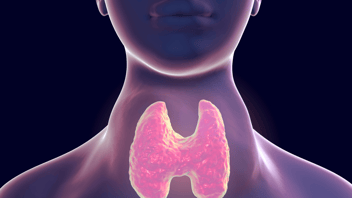
Hyperthyroidism NCLEX Review for Nursing Students + Free Download
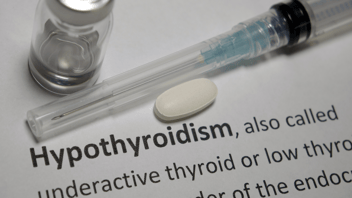
Hypothyroidism NCLEX Review for Nursing Students + Free Download

Cushings Syndrome NCLEX Review for Nursing Students + Free Download
opens in a new window
- The Official Publication of the Colorado Nurses Foundation in Partnership with the Colorado Nurses Association.

Nurse Practitioner Case Study: Failure to diagnose blood clot resulting in irreversible ischemia, below the knee amputation
Colorado nurse may 2024.
This article appears on page 10 of
Nurse Practitioner Case Study with Risk Management Strategies Presented by NSO and CNA
Patient non-adherence can come in many forms: inability or unwillingness to follow a course of therapy, repeated missed appointments, rejecting treatment recommendations, reluctance to take medications, refusal to provide information, or chronic late payments. If left unaddressed, such conduct may result in adverse patient outcomes and even litigation. This medical malpractice case study and risk management strategies, presented by NSO and CNA, involves a family nurse practitioner (FNP) who worked in a nurse practitioner office setting.
Summary A 46-year-old male established care with the insured family nurse practitioner (FNP). The patient had recently broken his wrist and, while in the emergency department (ED), he was informed that “his blood sugar was really high and he needed to find a primary care provider to get it under control”. A finger stick Hemoglobin A1C was performed, reflecting a level of 11.5 percent. The patient did not have health insurance, so the FNP decided to start him on insulin as the medication and supplies would be available at no charge. The following was documented in the patient’s healthcare information record:
- Monitor blood sugar levels and keep a blood sugar log.
- Prevention and treatment for hypoglycemia.
- Education on how to administer the insulin, carbohydrate dietary measures and the importance exercise.
- Follow up with ophthalmology on a comprehensive eye examination.
- Perform daily examinations of his feet and ensure proper foot care and wear.
Over the next three to four months, despite missing a few appointments and failing to adhere to his insulin regimen, the patient’s blood sugar levels were in better control.
Nine months after his initial appointment with the insured FNP, the patient presented with complaints of pain to the top and side of the left foot. The patient reported he was uncertain if he had twisted it, went to an urgent care facility and had an x-ray, which was reportedly negative for any fractures.
A small bruise was documented to the top of the foot. He reported that he may have done something to it over the weekend while at a jump park with his children. In addition, he reported that he broke a toenail and may have cut it too short. He was having a difficult time walking with any type of shoe. The patient’s non-fasting blood sugar was 194, pulse was 128 bpm, and his other vital signs were unremarkable.
The FNP documented the following: “The patient’s toenail (big toe) is cut short with skin exposed, red and purplish in color at the lateral border. The left foot revealed no swelling or deformity with intact range of motion though movement was painful. Tenderness is noted over the tarsal tunnel.”
The FNP ordered lab work (CBC, CMP, and CPK level) and left lower extremity arterial Doppler color flow studies for a “left foot painful.” His was given an antibiotic and instructed to use non-steroidal anti-inflammatory drugs (NSAIDs) for musculoskeletal pain. An ace wrap was applied to the ankle and he was told to apply ice to his ankle to reduce the swelling. The patient declined all testing due to costs. The FNP instructed the patient that, if he did not want the testing, he should go to the ED as she thought he could have a blood clot. The patient reported that he would only go to the ED if his condition worsened.
Three days later, the patient was evaluated in the ED with a complaint of pain to the left thigh and foot, as well as a cold sensation in his foot. He reported that he had seen his primary care provider and had been placed on antibiotics, but the pain was getting worse. Physical evaluation revealed a completely cold left foot without dorsalis pedis pulse. His serum Creatine Kinase was 1608 IU/L and white blood cell count was 16.7 K/uL. A CT angiogram revealed an occlusion of the anterior tibial artery, posterior tibial and peroneal arteries and reconstituted peroneal artery identified at the level of the ankle joint. He was admitted for a possible thrombophilic disorder or idiopathic thrombophilic disorder and surgical intervention. The patient ultimately underwent a left below the knee amputation due to irreversible ischemia to the left lower extremity.
The patient filed a malpractice claim against the FNP, the FNP’s employer, the medical center and the surgeon who performed the initial surgical intervention.
Risk Management Comments The patient’s allegations against the FNP included:
- Failure to perform an adequate diabetic food exam;
- Failure to document the temperature on the left foot;
- Negligently diagnosing cellulitis/abscess and
- Negligently ordering compression and ice for a cold foot.
Defense experts were supportive of the FNP’s care and testified that her documentation of the patient’s care was thorough. Defense counsel believed that the case was defensible, but the other defendants in the case were engaging in finger pointing, making the defense of the FNP more difficult.
Resolution The FNP was ultimately dismissed from the case on summary judgment. The claim lasted seven years and expense costs to defend the insured FNP exceeded $140,000.
Total Incurred: Over $140,000 (Note: Figures represent only the defense expense payments made on behalf of our nurse practitioner and do not include any payments that may have been made by the NP’s employer on her behalf or payments from any co-defendants. Amounts paid on behalf of the multiple co-defendants named in the case are not available.)
Risk Control Recommendations
- Compile a comprehensive patient clinical history, as well as relevant social and family history.
- Document all patient-related discussions, consultations, clinical information and actions taken, including any treatment orders that are provided.
- Perform a physical examination to determine the patient’s health status and evaluate the patient’s current symptoms/complaints.
- Record all patient non-adherence with ordered testing and treatment, as well as all counseling given, and other efforts made to encourage compliance.
- If non-adherence is related to a lack of health insurance or financial resources, refer the patient to appropriate resources, such as social agencies and/or free or low-cost clinics, and follow up to ensure compliance.
- If the patient is uninsured or unable to afford necessary diagnostic and consultative procedures, refer the patient for financial assistance, payment counseling, and/or free or low-cost alternatives, and document these actions.
- Discuss clinical findings, diagnostic test/procedure results, consultant findings, diagnosis, the proposed treatment plan, and reasonable expectations for the desired outcome with patients, in order to ensure their understanding of their care or treatment responsibilities. Document this process, noting the patient’s response.
Disclaimers These are illustrations of actual claims that were managed by the CNA insurance companies. However, every claim arises out of its own unique set of facts which must be considered within the context of applicable state and federal laws and regulations, as well as the specific terms, conditions and exclusions of each insurance policy, their forms, and optional coverages. The information contained herein is not intended to establish any standard of care, serve as professional advice or address the circumstances of any specific entity. These statements do not constitute a risk management directive from CNA. This material is for illustrative purposes and is not intended to constitute a contract. No organization or individual should act upon this information without appropriate professional advice, including advice of legal counsel, given after a thorough examination of the individual situation, encompassing a review of relevant facts, laws and regulations. CNA assumes no responsibility for the consequences of the use or nonuse of this information.
This publication is intended to inform Affinity Insurance Services, Inc., customers of potential liability in their practice. This information is provided for general informational purposes only and is not intended to provide individualized guidance. All descriptions, summaries or highlights of coverage are for general informational purposes only and do not amend, alter or modify the actual terms or conditions of any insurance policy. Coverage is governed only by the terms and conditions of the relevant policy. Any references to nonAon, AIS, NSO, NSO websites are provided solely for convenience, and Aon, AIS, NSO and NSO disclaims any responsibility with respect to such websites. This information is not intended to offer legal advice or to establish appropriate or acceptable standards of professional conduct. Readers should consult with a lawyer if they have specific concerns. Neither Affinity Insurance Services, Inc., NSO, nor CNA assumes any liability for how this information is applied in practice or for the accuracy of this information.
Nurses Service Organization is a registered trade name of Affinity Insurance Services, Inc., a licensed producer in all states (TX 13695); (AR 100106022); in CA, MN, AIS Affinity Insurance Agency, Inc. (CA 0795465); in OK, AIS Affinity Insurance Services, Inc.; in CA, Aon Affinity Insurance Services, Inc., (CA 0G94493), Aon Direct Insurance Administrators and Berkely Insurance Agency and in NY, AIS Affinity Insurance Agency.

2023 Nursing Research ANT Actions
Related Articles

Government Affairs & Public Policy Committee Update

Congratulations to the Colorado Nurses Association Accredited Approver Unit (AAU)
The Federal Register
The daily journal of the united states government, request access.
Due to aggressive automated scraping of FederalRegister.gov and eCFR.gov, programmatic access to these sites is limited to access to our extensive developer APIs.
If you are human user receiving this message, we can add your IP address to a set of IPs that can access FederalRegister.gov & eCFR.gov; complete the CAPTCHA (bot test) below and click "Request Access". This process will be necessary for each IP address you wish to access the site from, requests are valid for approximately one quarter (three months) after which the process may need to be repeated.
An official website of the United States government.
If you want to request a wider IP range, first request access for your current IP, and then use the "Site Feedback" button found in the lower left-hand side to make the request.

IMAGES
VIDEO
COMMENTS
List symptoms the nurse will observe if the parathyroid gland is injured or removed during surgery. Case Study: Hypo Thyroid Disease - Myxedema. Jeanine has been dieting and exercise and trying unsuccessfully to lose weight. Her nutrition counselor suggests that Jeanine to her physician.
Endocrine Case Study Assignment endocrine case study based on the objective findings, is this patient in danger? please give details why or why not? what should. ... Pathophysiology and Clinical Reasoning for Nursing (NURS 367) 78 Documents. Students shared 78 documents in this course. University Mercy College. Academic year: 2021/2022.
Endocrine System Disorders Nursing Test Bank. In this section are the NCLEX practice questions for endocrine system disorders. This nursing test bank set includes 50 questions divided into two parts. All questions on this set are updated to give you the most challenging questions, along with insightful rationales to reinforce learning.
Introduction. This resource is a collection of four case-based exercises intended to provide medical students with structured and focused opportunities to link basic science with clinical application. The cases are designed to help students self-evaluate their knowledge and develop a robust and well- integrated understanding of endocrine ...
1. MODULE 10: ENDOCRINE CASE STUDY. This lab will include some activities and require some research that will help you understand and appreciate the Endocrine System. This Module uses a case study approach. There will be an online worksheet that you will enter your answers on. You will be allowed to "Save for Later" and "Submit" the ...
Endocrinology is the study of endocrine cells/organs, the hormones secreted, regulation of hormone secretion and the effects of hormones on their target cells/organs. Endocrine vs. Exocrine tissues Endocrine secretes hormones, while exocrine secretes all the other stuff (mucus, enzymes, sweat). ... this case the protein is the channel AND the ...
This case study illustrates Harvey Cushing's pioneering work in pituitary transplantation in the early 20th century and the essential relationship between laboratory research and clinical practice.
The endocrine system regulates the development and the functions of the reproductive systems in males and females. Uterine contractions and milk release. The endocrine system controls uterine contractions throughout the delivery of the newborn and stimulates milk release from the breasts in lactating females. Ion management.
Abstract. The endocrine system and the hormones it produces control a range of processes in the body, as well as helping to maintain homeostasis. When this complex system is disrupted, including by changes associated with ageing, disease may result. This article provides an overview of the endocrine systems, key glands and hormones, and some of ...
Endocrinology Nursing is a fast-developing specialty with nurses performing advanced roles and expanding their practice to run independent nurse-led services. Supported by the European Society of Endocrinology (ESE) and edited by members of the ESE Nurses Working Group, this is the first book ever published specifically for endocrine nurses.
Chapter 28 - Endocrine Emergencies. Published online by Cambridge University Press: 04 May 2017. By. Aylwin J. Chick. Edited by. Daniele Bryden and. Andrew Temple. Chapter. Get access.
Endocrine Case Study. You graduated 3 months ago and are working with a home care agency. Included in your caseload is J., a 60-year-old man suffering from chronic obstructive pulmonary disease (COPD) related to cigarette smoking. He has been on home oxygen, 2 L oxygen by nasal cannula (O 2 /NC), for several years.
The endocrine system is a meticulously organized network of glands, each producing specific hormones that act as messengers, regulating bodily processes. Unlike the rapid transmission of the nervous system, hormones travel through the bloodstream, reaching target cells across the body to maintain equilibrium. Crucial Players: Glands and Hormones.
BP 156/92. RR 14. Temp 98.8°F. The nurse notes purple/pink stretch marks on arms, abdomen, and thighs. Ms. Smith has multiple cuts and bruises on her arms. When asked how she got them, she says "my skin is just so thin these days". She is obese with noticeable fatty deposits in the midsection and upper back.
Use the John Jones case study to answer the following question. Which behavior in John's social history poses a potential concern with first line pharmacological treatment for diabetes and why? The 2019 ADA Standards of Medical Care in Diabetes recommends at the initial diagnosis of DMII to initiate lifestyle changes along with an oral ...
Endocrine Case Studies. A 19-year old BCTC student was admitted to the UK Medical Center because of extreme fatigue. and weight loss. For the previous year he had tired easily, had lost 64 pounds in the last 2 years, his present height is 71 inches and his weight 140 pounds. About 4 years previously, he began to urinate frequently at night, and ...
CASE STUDY February 24, 2019 Pituitary disorders; By Wendy Schwarz Case history. A girl aged 15 years and 2 months is referred to the Endocrine Clinic for short stature and delayed puberty. Read the patient information below and answer Question 1. Early history Hover to view Early history ...
Northeast Ohio Medical University is an Equal Education and Employment Institution ADA Compliance | Title IX. NEOMED Library- 4209 St, OH-44, Rootstown, OH 44272 - "A Building" Second Floor. 330-325-6600. [email protected]. Except where otherwise noted, content on the NEOMED LibGuides is licensed for reuse under a Creative Commons 3.0 Attribution-NonCommercial license (CC BY-NC)
Endocrine Case Study Erin Jones Nursing Department, Herzing University NU 621: Advanced Pathophysiology Dr. Markeisha Edgerton March 26, 2022. Abstract The endocrine system comprises numerous glands all over the body (McCance & Huether, 2019,p. 668). DM is an illness of the body's inability to control blood glucose levels.
The doctor sketched a quick diagram on the whiteboard in his office. "First, your pituitary senses the level of thyroid hormone in your blood, if the amount is low, then it releases Thyroid Stimulating Hormone to stimulate the thyroid to release more thyroid hormone. Basically, the pituitary is attempting to return the system to a normal ...
Use this simple Q& A page over the endocrine system to test your knowledge and prepare for upcoming tests. Feel free to print, copy, share, and use this study guide in any way! Remember: Adrenal HYPO function = Addisons: Adrenal HYPER function=Cushings: Thyroid HYPER function=Graves. The biggest tip I can give with learning endocrine D/Os is to ...
This medical malpractice case study and risk management strategies, presented by NSO and CNA, involves a family nurse practitioner (FNP) ... About Endocrine Society . The Endocrine Society, established in 1916, is a global organization of 18,000+ professionals in endocrinology and metabolism. ... 2023 Nursing Research ANT Actions. Related ...
Introduction: This resource is a collection of four case-based exercises intended to provide medical students with structured and focused opportunities to link basic science with clinical application. The cases are designed to help students self-evaluate their knowledge and develop a robust and well-integrated understanding of endocrine ...
requirement at 45 CFR 164.508(c)(1)(iv) that a description of a research purpose must be study specific. 99. The Department explained that, under its new interpretation, the research purposes ... Case law shows that, when unable to communicate with the court, LEP litigants are unable to defend themselves appropriately in criminal or
Studies with PFAS and other classes of chemicals support the health-protective conclusion that chemicals that have similar observed adverse effects following individual exposure should be assumed to act in a dose-additive manner when in a mixture unless data demonstrate otherwise (USEPA, 2024a). ... immune, endocrine, metabolic, reproductive ...
Introduction: This resource is a collection of four case-based exercises intended to provide medical students with structured and focused opportunities to link basic science with clinical application. The cases are designed to help students self-evaluate their knowledge and develop a robust and well- integrated understanding of endocrine physiology and pathophysiology in the context of a ...